October 21, 2018
Martha O'Kennon
Cold. Coat weather part of the time. Some of the leaves are turning bright red. Here is some Virginia Creeper. It's got 5 leaves to a point and so it isn't any other kind of possibly poisonous vine. At this time of year, when I'm doing my daily walkaround of the shop siding in the morning, the sun makes wonderful shadows that play there on this pretty blue siding. Our Jadesy, the tiny Jade Plant cutting, has finally gotten enthusiastic about starting over. Her maternal unit had gotten too big to drag in and out the back door, and so was given to a friend. One of the coolest things about Jadesy is that it blooms in the winter. I remember walking up the hill towards the University of Cape Town and seeing the border of Jade Plant (which can live outside all year there) blooming along the way. Here one seems to need to leave the plant outside until just before November. At that point, you can peel apart the tiny twinned lobes and see the tiniest buds for the flowers that will be pale pink clusters through the worst of the winter. Oh! If you click on Jadesy to get the enlarged view, you will see a little Hover Fly near the right-hand side.
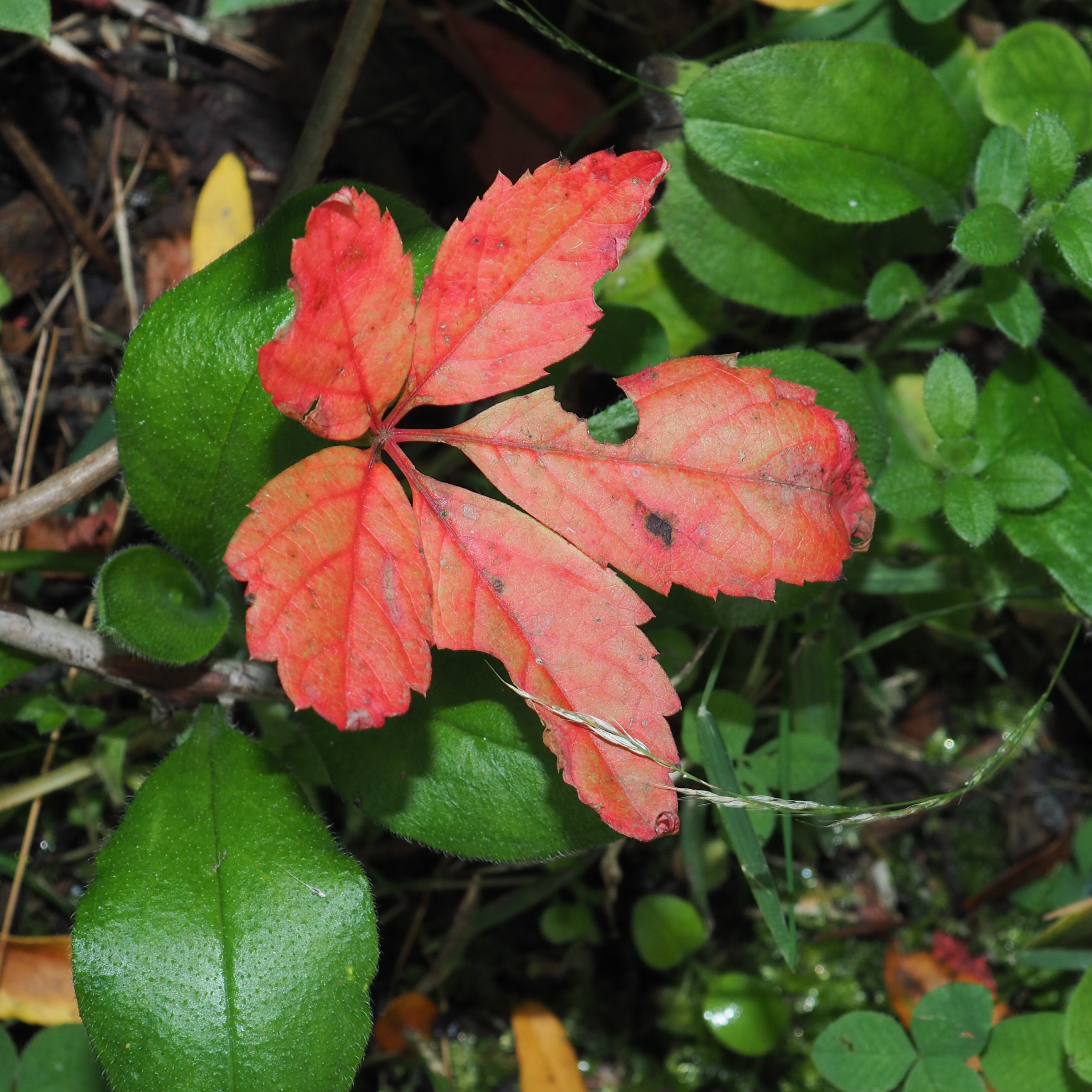
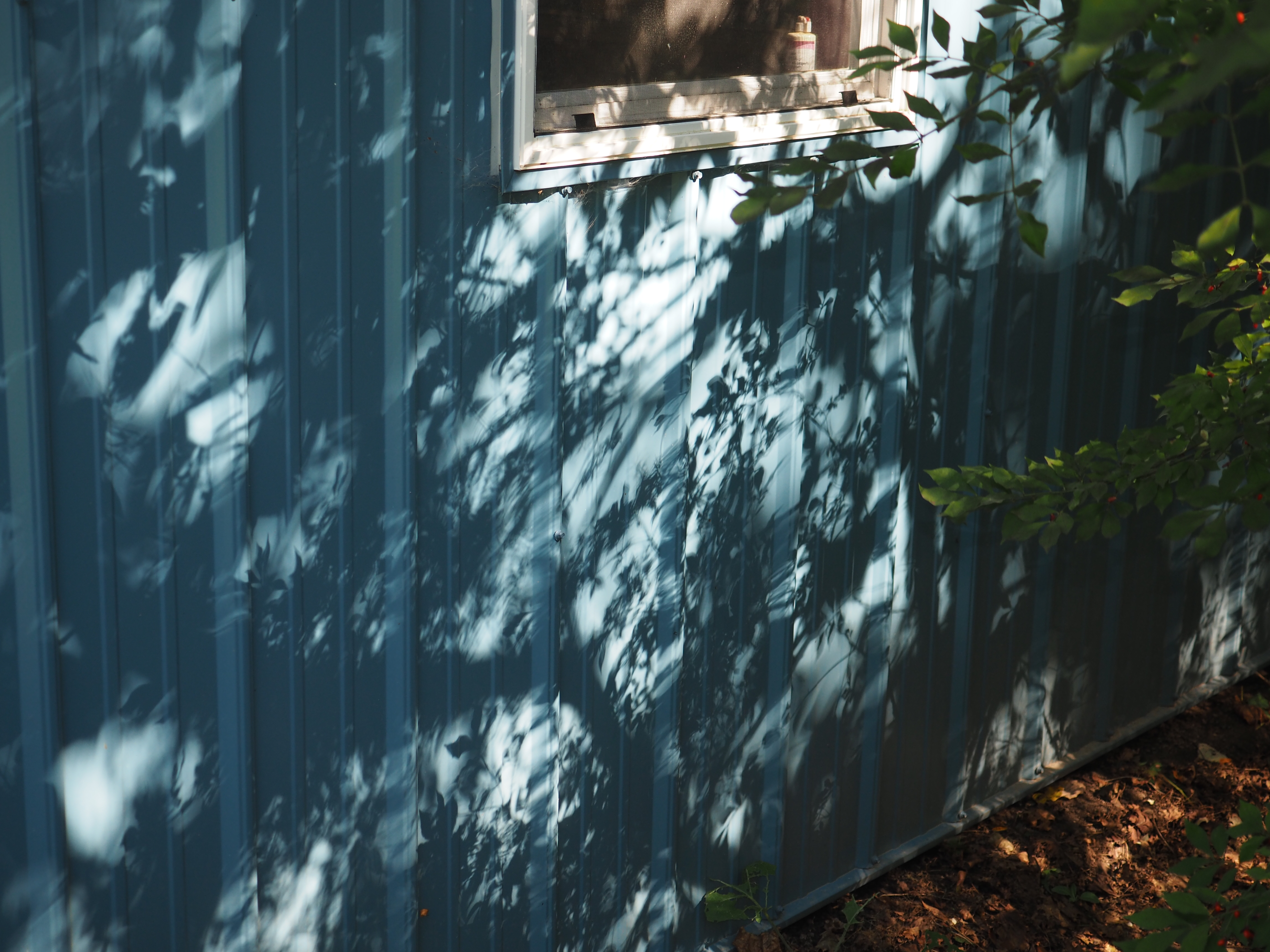

Remember that there is information in the name of the file for each image. You can see it by mousing over the image - look at the lower left of the screen. Or you can click on the image to get to the (usually) larger image. Then the info is displayed in the address line above. Sometimes the second click will actually display a different view of the original image.
I've been finding lately that a pre-bedtime stroll around the workshop (with a flashlight) can yield some surprising pictures. Here is one of the regular ants - the shadow makes it look as if it had two heads. This next little hairy one (maybe a Small Honey Ant) looks like a deer in the headlights - I think I surprised it coming around the corner. That must be all I have on ants.
I keep thinking it was a great week for barklice. But in reality I only had two barklice show up this time. One of them was - my favorite as you must know (I keep saying it) - Graphopsocus cruciatus, the one with tigery colors. The last shot is not so great of the Tiger Barklouse, but look at all the debris. I was wondering what these things do eat and found a quote from my friend András saying, "Barklice feed on lichen, algae, mold, pollen, vegetation and animal fragments." It really seems to be making a clean sweep (Give the picture a couple of clicks). So they are some more of Nature's clean-up crew.
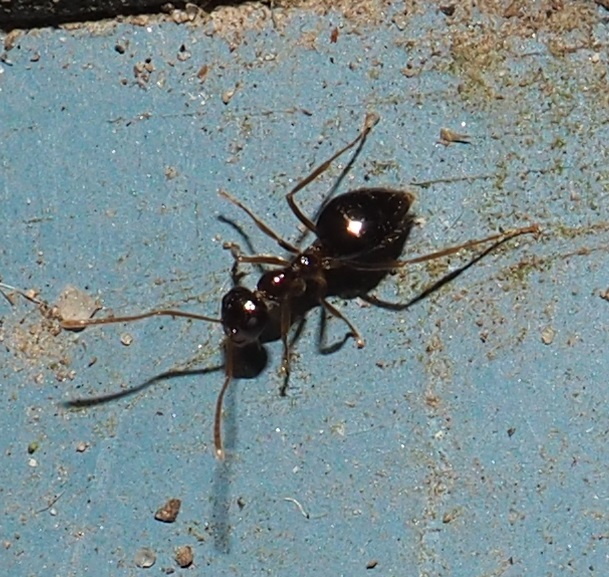
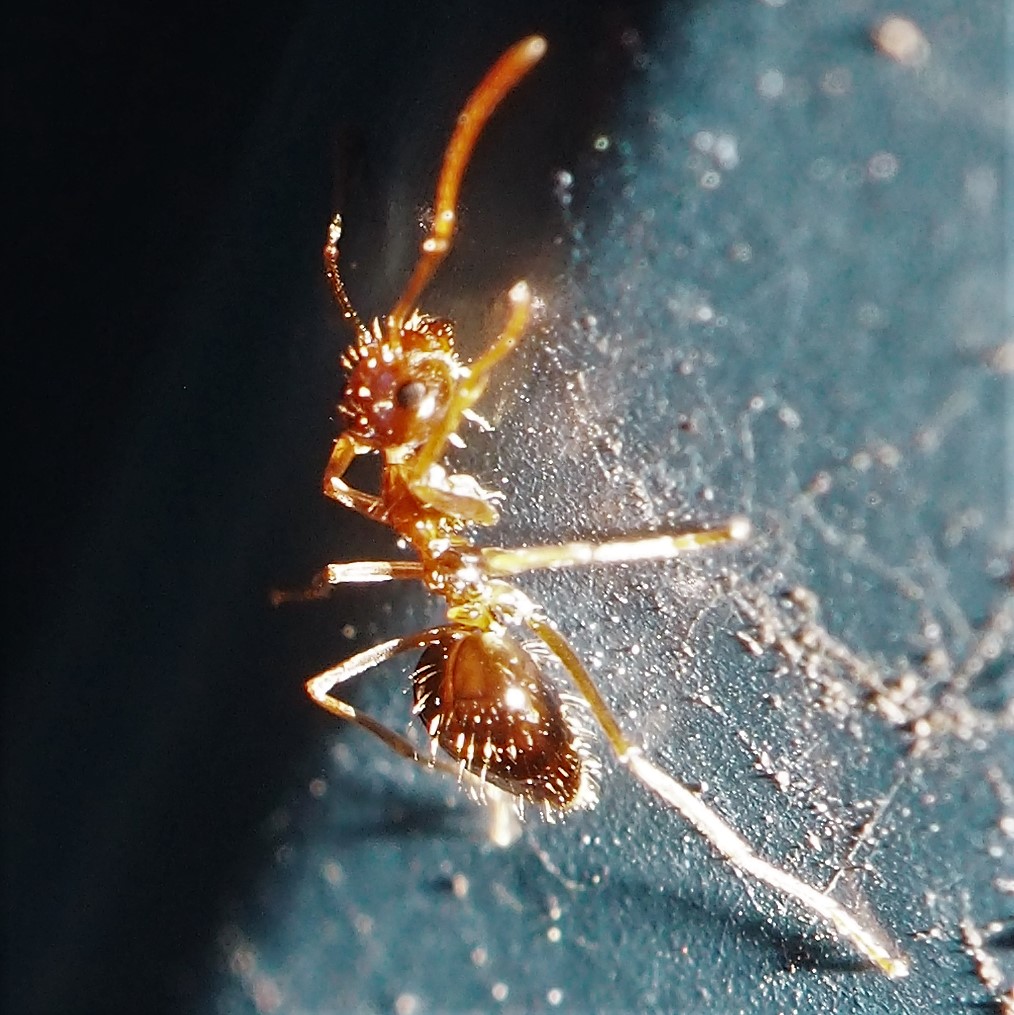
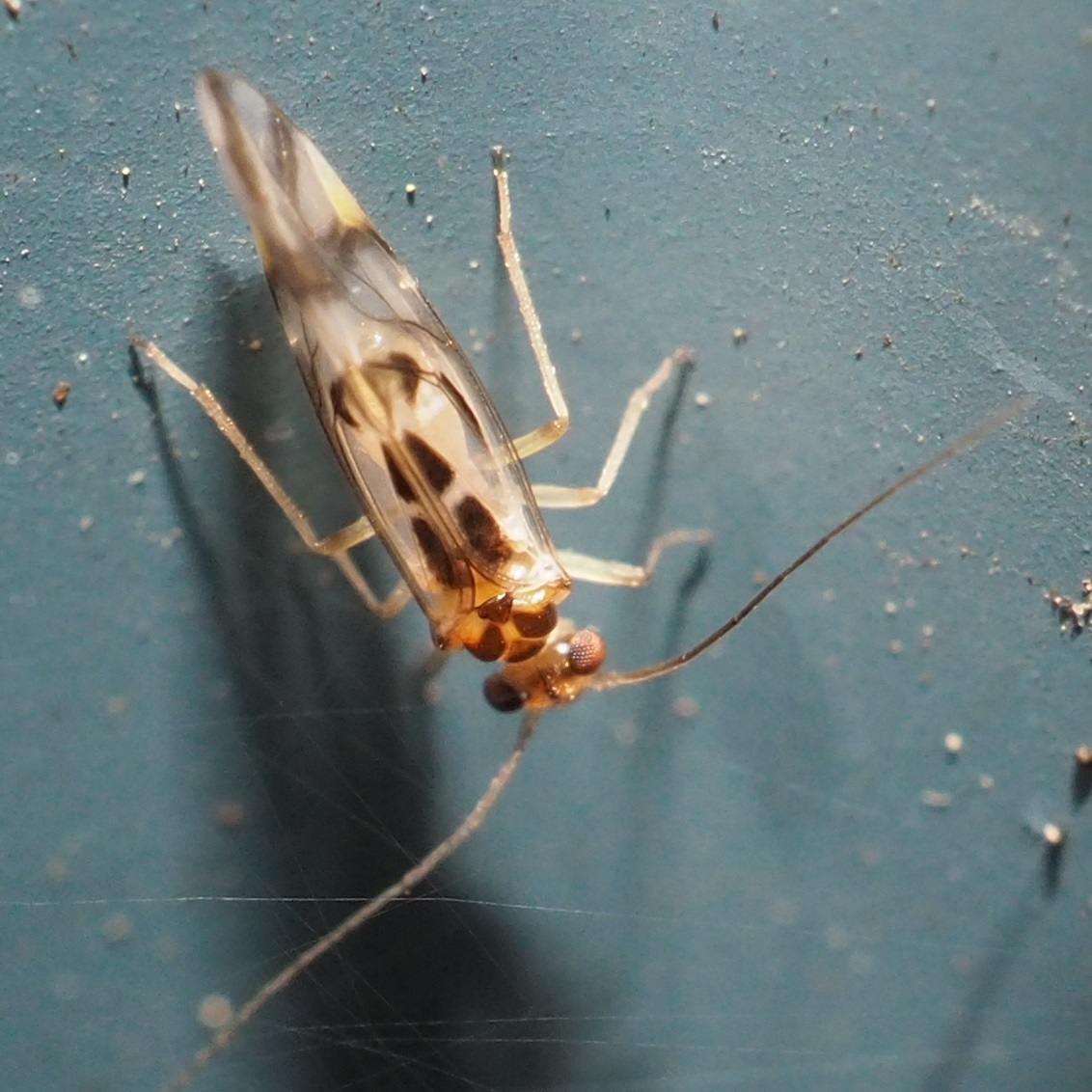
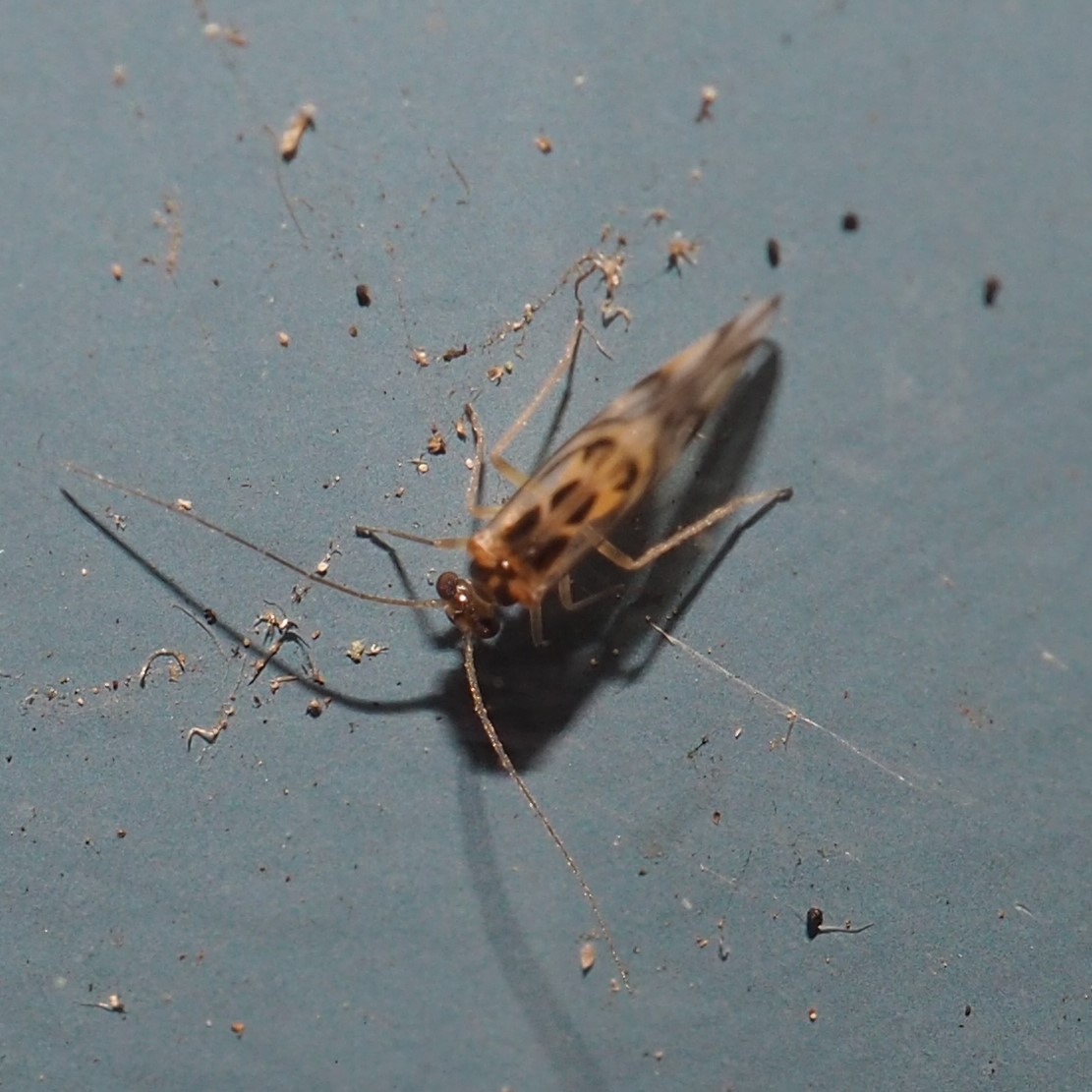
One more oblique picture of Tiger. Here is a so-called Fateful Barklouse, genus Lachesilla. I haven't found the exact species name yet, but I do admire more and more its construction and color. And its brilliant see-through wings.
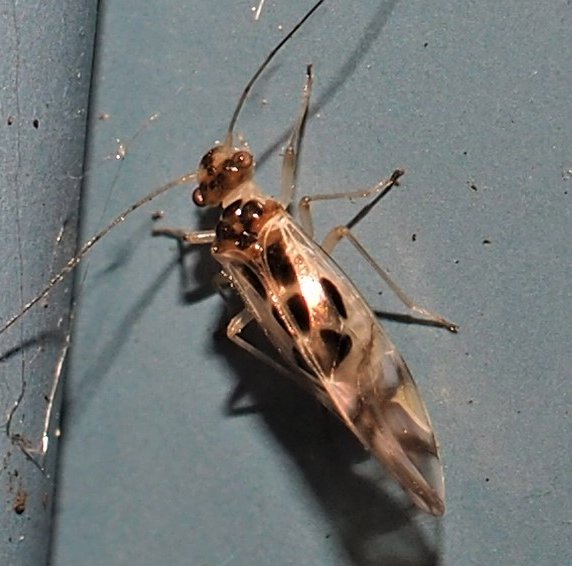


Bees? Not a one that I saw. But here are two different Asian Lady Beetles. And a pinkish and black Notoxus desertus. This one is from just after dark.
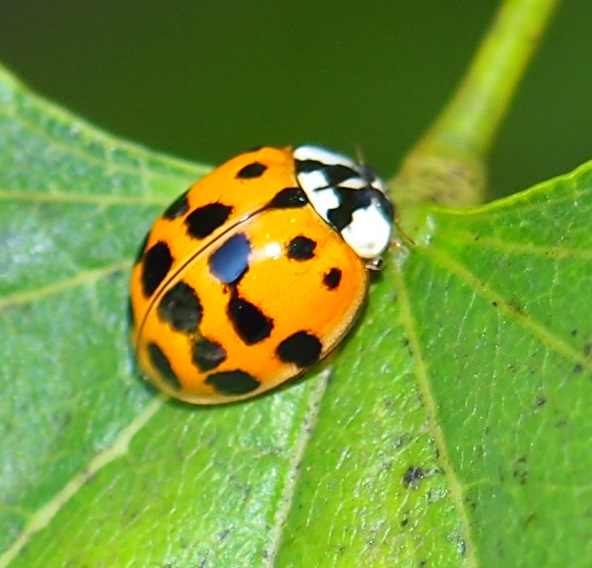
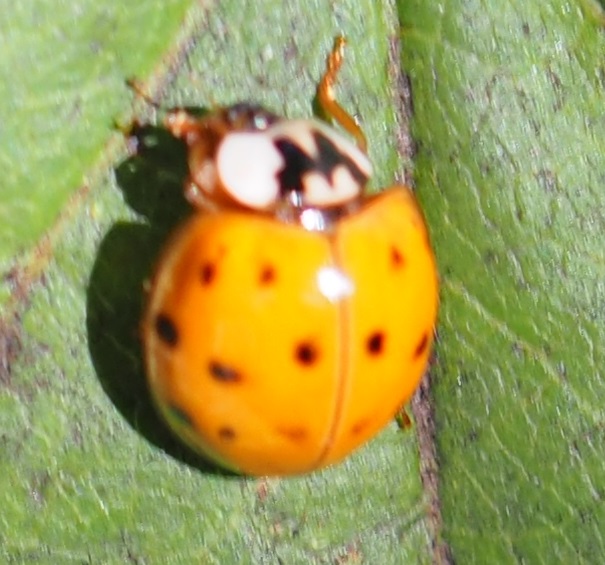
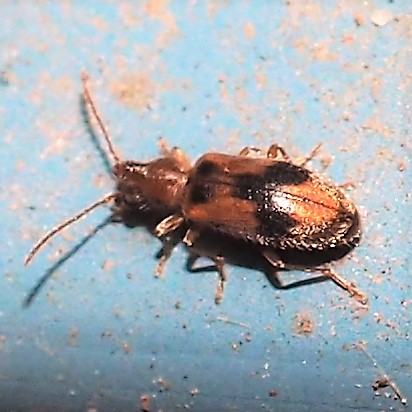
Since I saw so few beetles, here is a nice skeleton, probably produced by a team of recyclers. The next picture shows (I think) what was left after all the recyclers got theirs. I call it "Beast of Light and Shadow" , but think "Beast of Smoke and Ash" might do just as well.
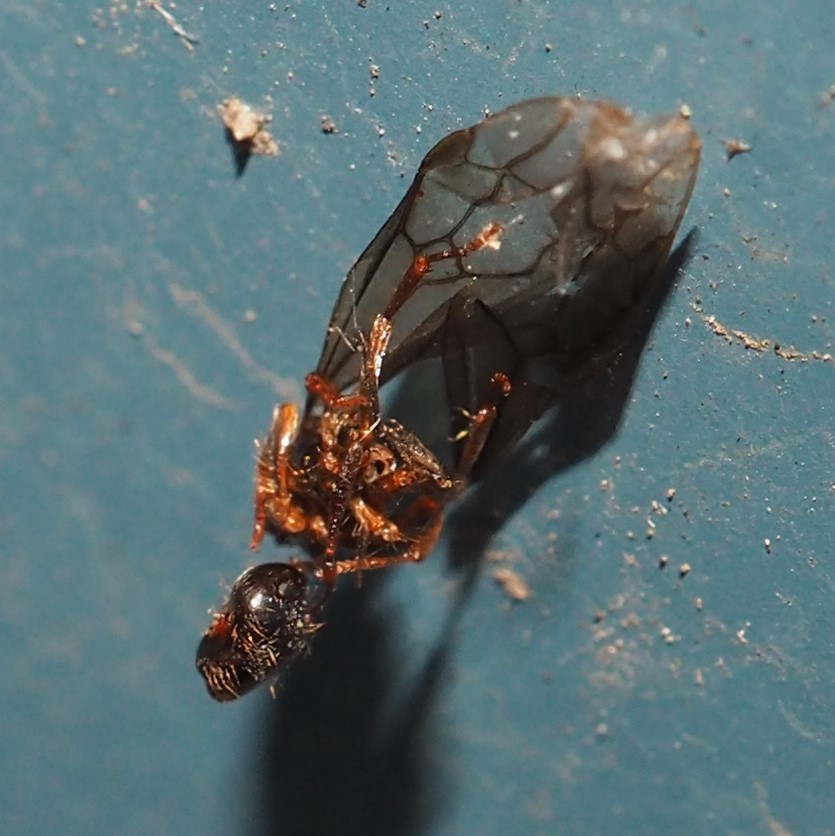
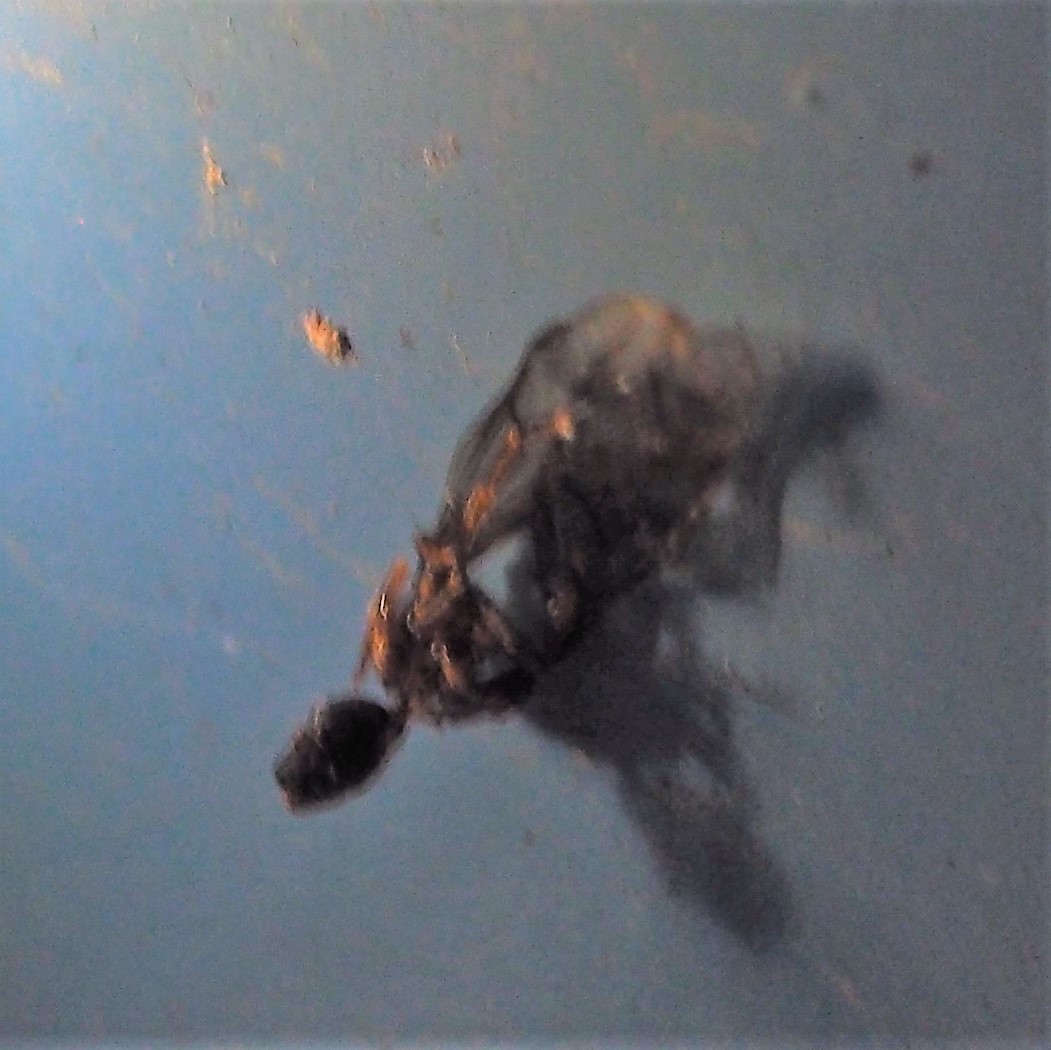
I've been collecting a number of these bugs with the official nomenclature of "Dirt-colored Seed Bugs" for a while but this year got an identification for an old brown and black one that I've been waiting for! Now I'm seeing one (#2) that looks red where the original brown was and as if some of its top paint got sanded somehow. I haven't yet got an answer for whether it is another coloration of the first or not. There is another with black all over (#3) but otherwise similar to the first picture, but it is in a separate place within the family Rhyparochrominae.

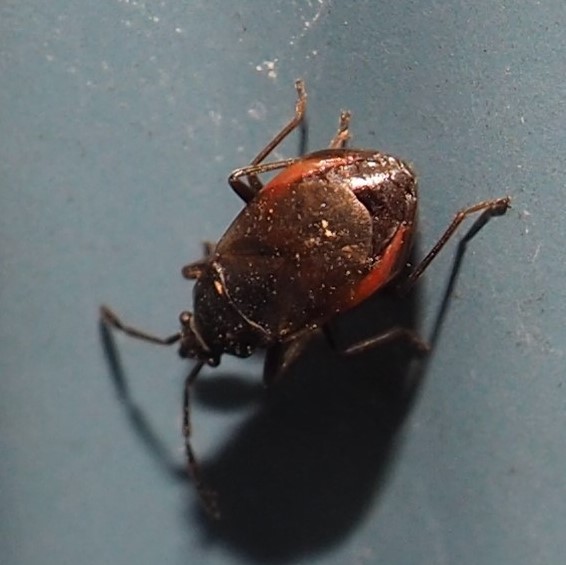
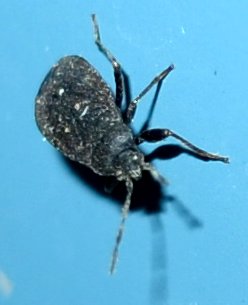
On to Bugs. I only saw one Leafhopper or Sharpshooter this week. It is a terrible picture but it didn't want to dally. But I did bag one more Planthopper (I think and hope) still in a form covered by what looks like fluff off a Q-Tip. If you zoom in, you'll see that our ? has rented out some property to a lot of tiny creatures. They will probably fly by night. This one was sitting on a small branch of the weeping redbud. You can also see one of the red buds that has already been set on the underside of the branch.
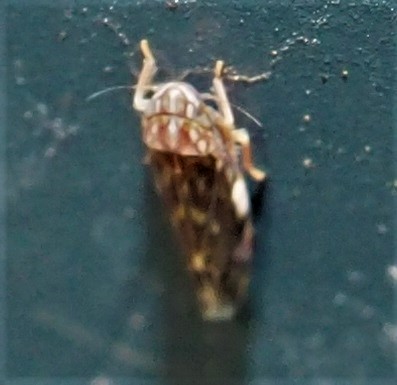

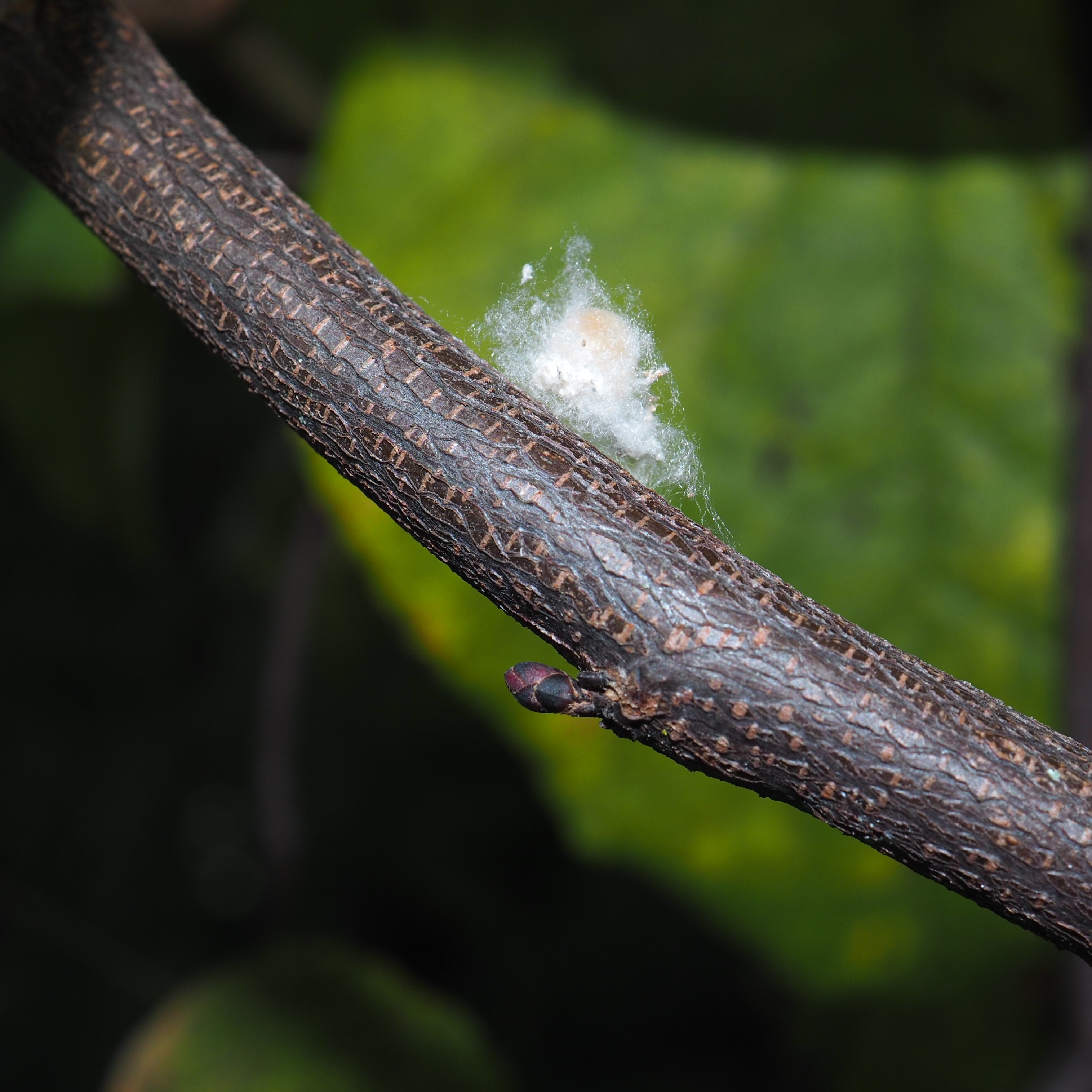
Here are two more bugs (or so I say). One is a big mystery.. The second at least LOOKS right for some kind of bug. Number 3 has been roundly trounced as not a bug or even anything animal, but maybe some part of a plant. The small figure at the lower right of this last picture seems to be a cartoon alien. I see it too is getting around on a cane.
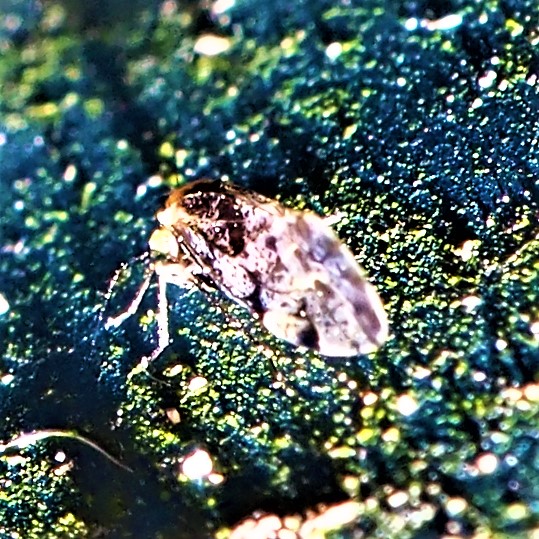
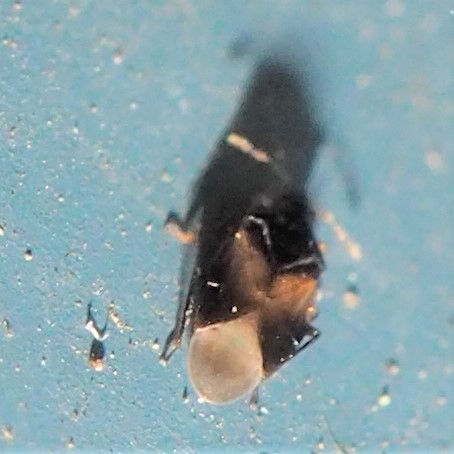
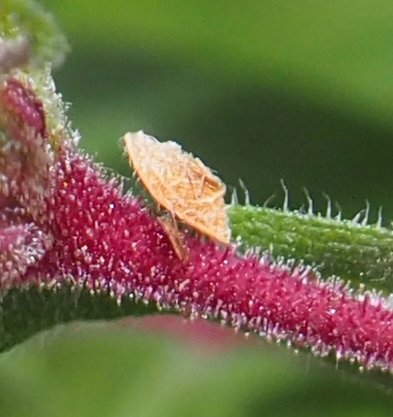
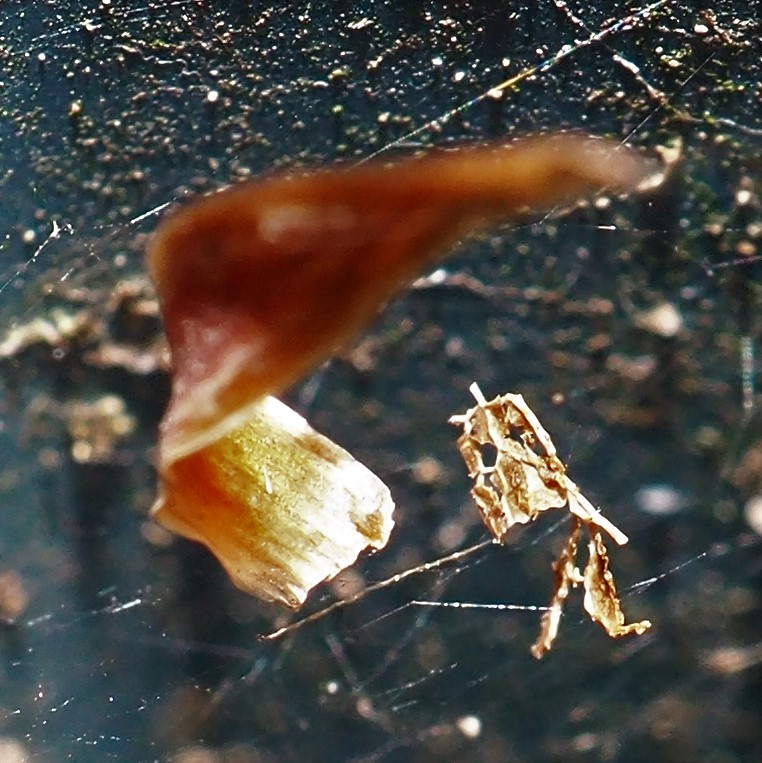
For years I've wondered what the creature in this case is. A colleague (@amzamz) at iNaturalist.org says it is the larva of a kind of moth called an Olethreutine Leafroller Moth. It does seem to have rolled up a collection of leaves with which to make a nice bag to live in till time to come out as an adult. Back on August 21 of this year I submitted this second picture (taken on August 23, 2015) which had puzzled me until I got a copy of the new Peterson's Moths. It is a Cherry Leafroller Moth (Caloptilia serotinella). Maybe things are slowly coming together. (The third is another kind of case I keep seeing.)

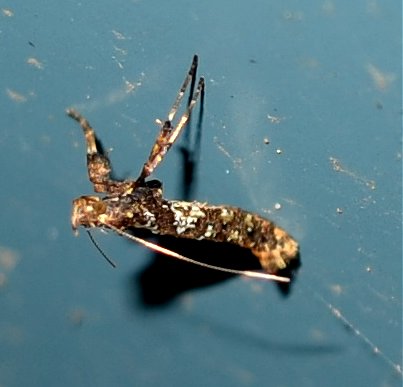
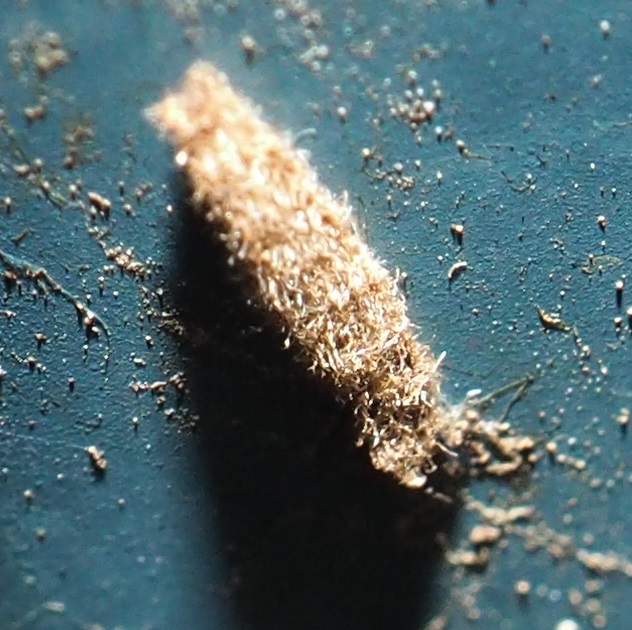
The other day I spotted this Jumping Bush Cricket way high up under the eaves of the shop roof. By stretching and aiming a few times, I finally got a picture. It is a female, as you can see.
(How?) Picture 2: Here she is again, obviously trying to lasso some kind of dogie. And last, so that you can see how long those antennae really are!
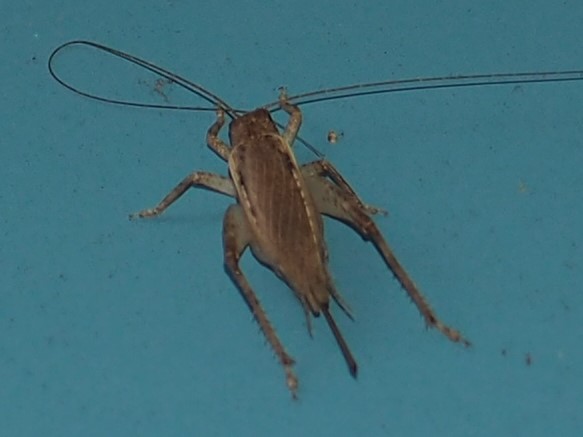
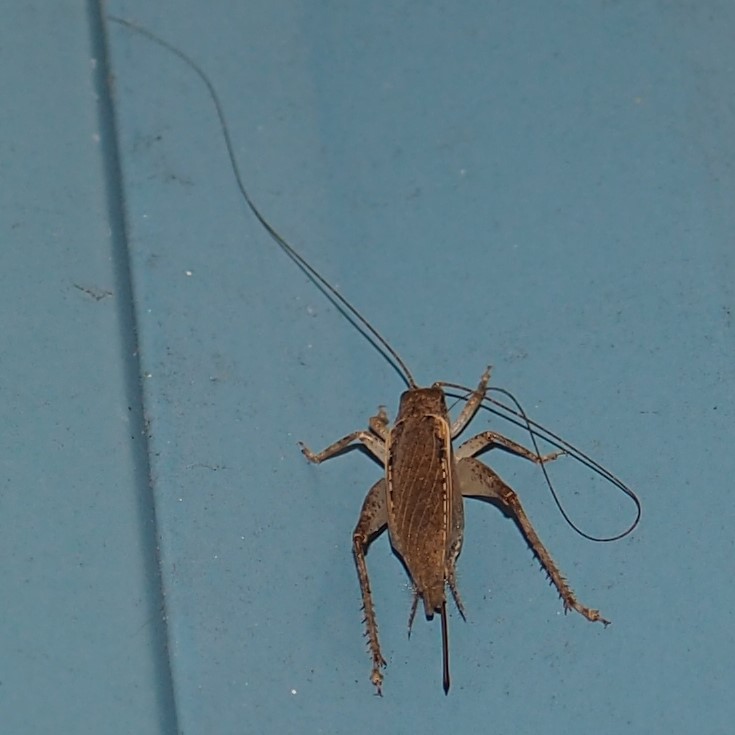
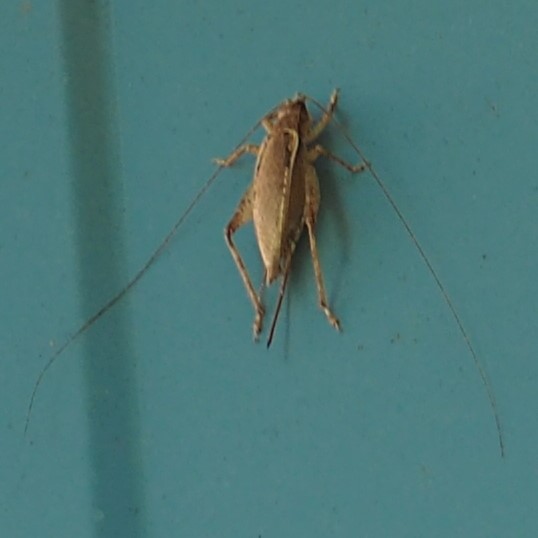
I see a lot of earwigs, especially at night. Here is an article about them from Wikipedia
So they are destructive of some crops. But they have an admirable relation between mother and young. They are also active at night. I haven't seen them attack any other bugs (in the colloquial sense).
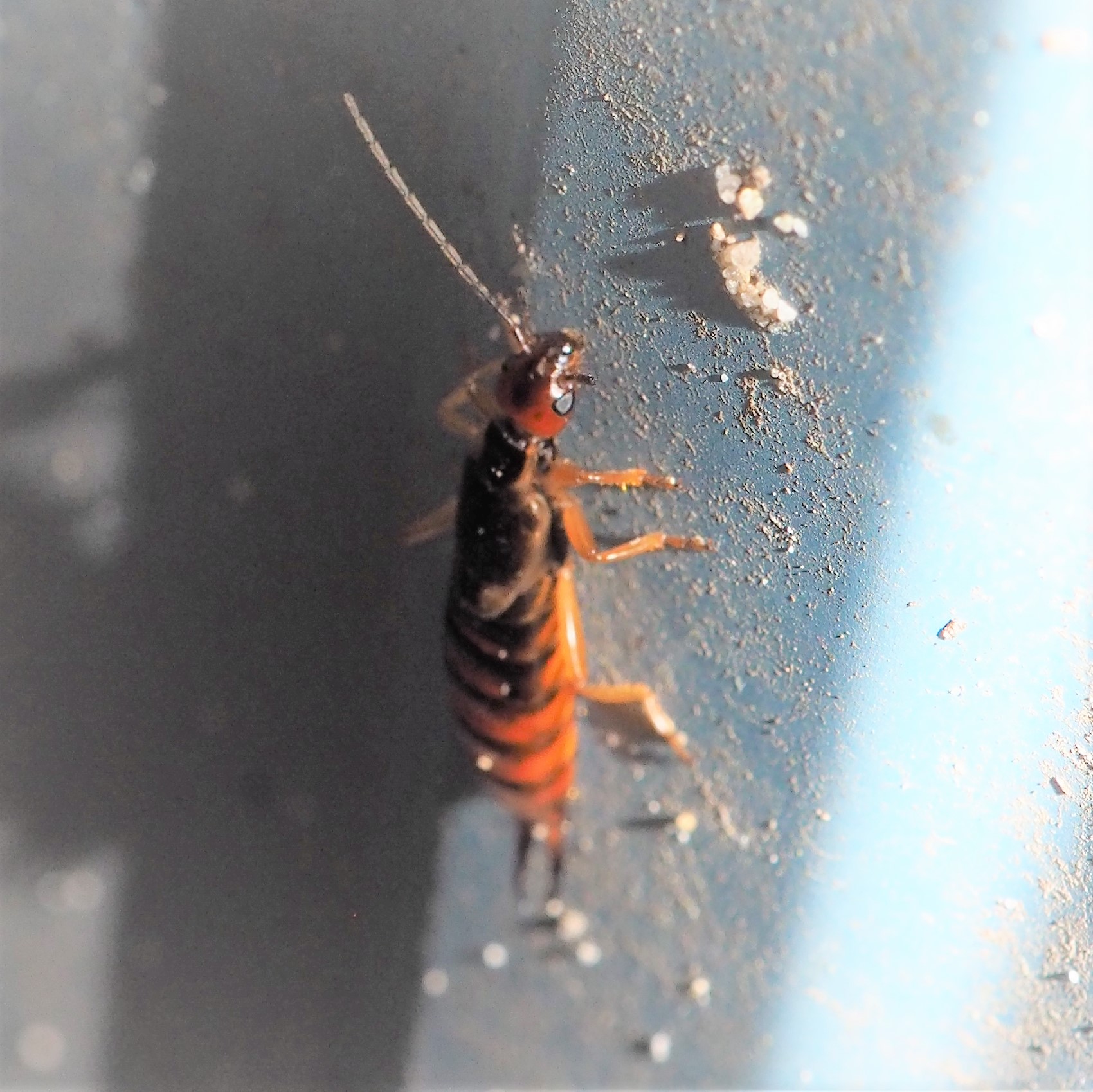
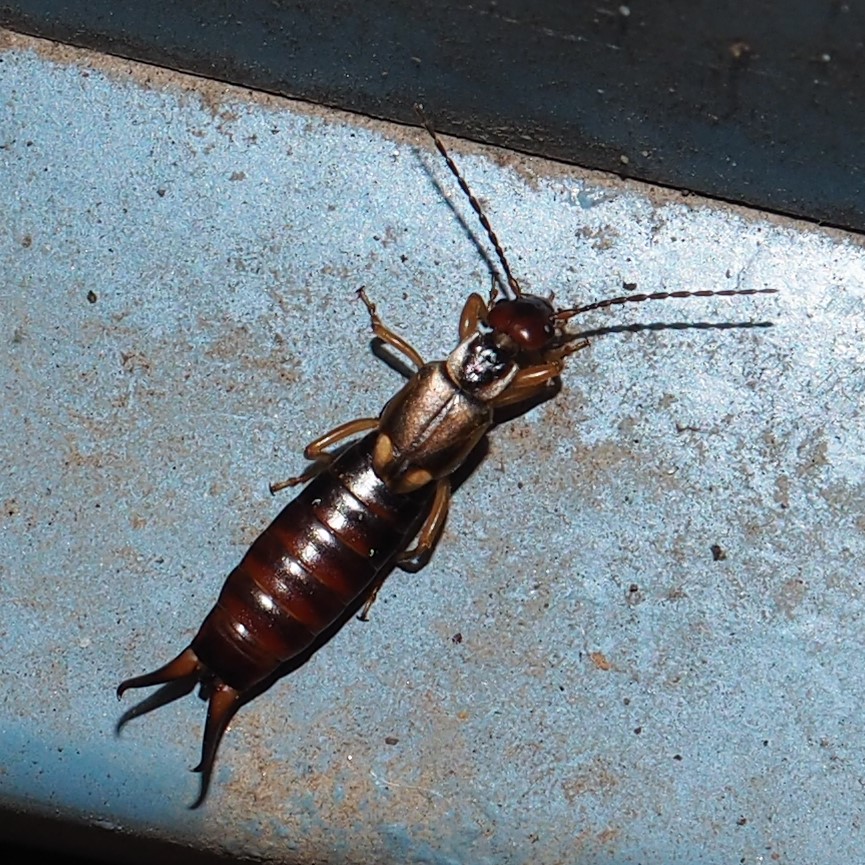
Too bad I didn't get any Fishy pictures. I suppose you recognize my old faithful Summer Chair, which is fairly convenient to push around to where I want to sit and observe. It's quite comfortable for not too long a sit. Well, no harm in surveying the fly-rich horizon. Day and night, flies still abound. I wonder what this little black one has draped around his shoulders?
Number 3 resembles Number 2 a little bit. Number 4 is a little black midge, possibly a chironomid.

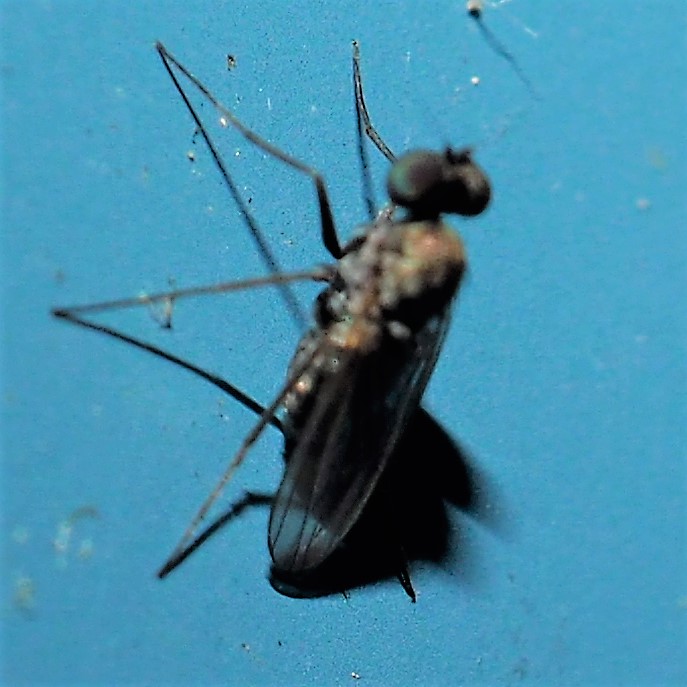
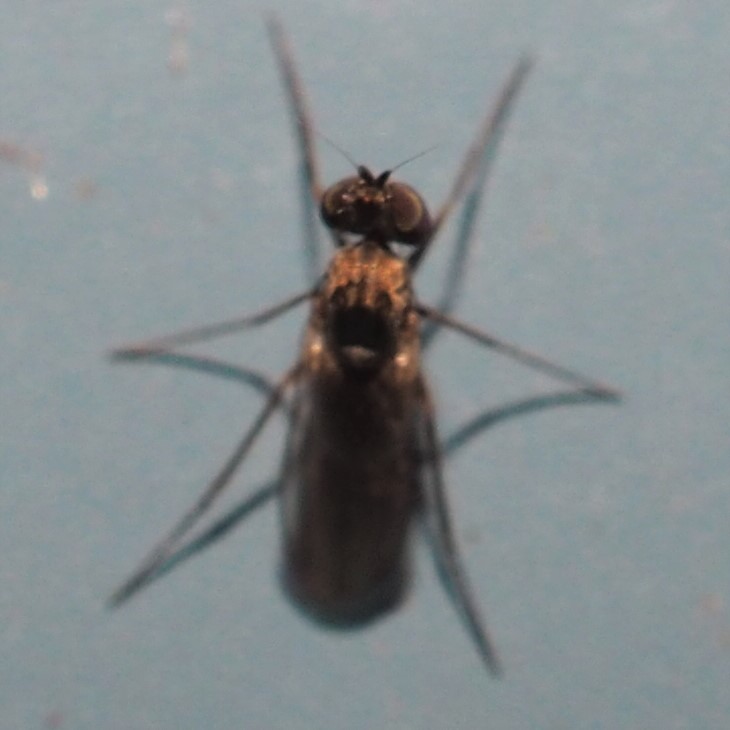
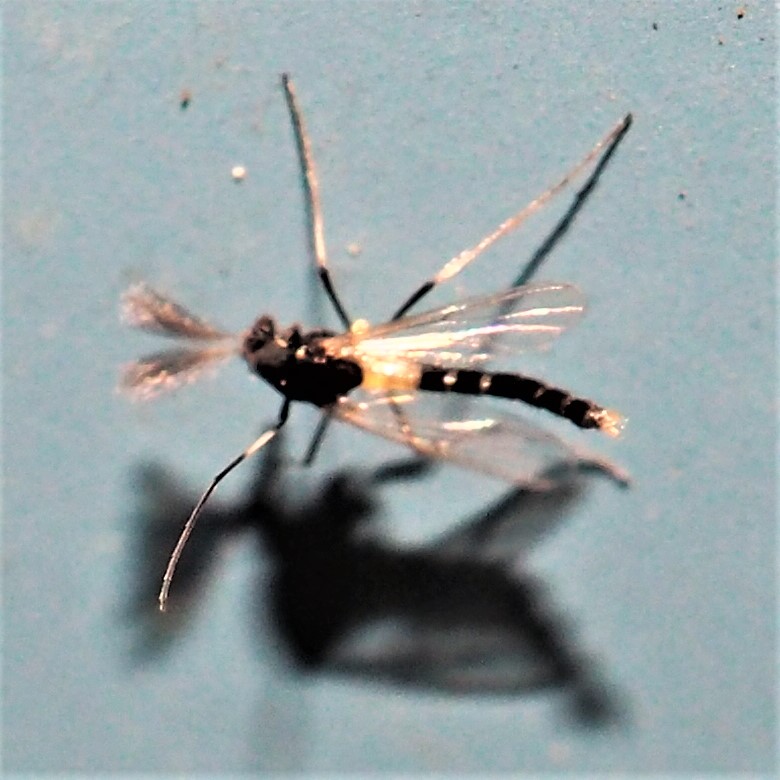
This mosquito is probably the one we saw blood-engorged before. It is Aedes (ooh - scary) vexans. That means it is very annoying, but doesn't yet carry any of the viruses that some other Aedes genera do. But again, zoom to those green eyes. By the way, remember the long thick rostrum shows it is a female. (Males don't suck blood.) If #2 looks shorter, it is. Or at least looks it. i just liked the gleaming wings in #3.
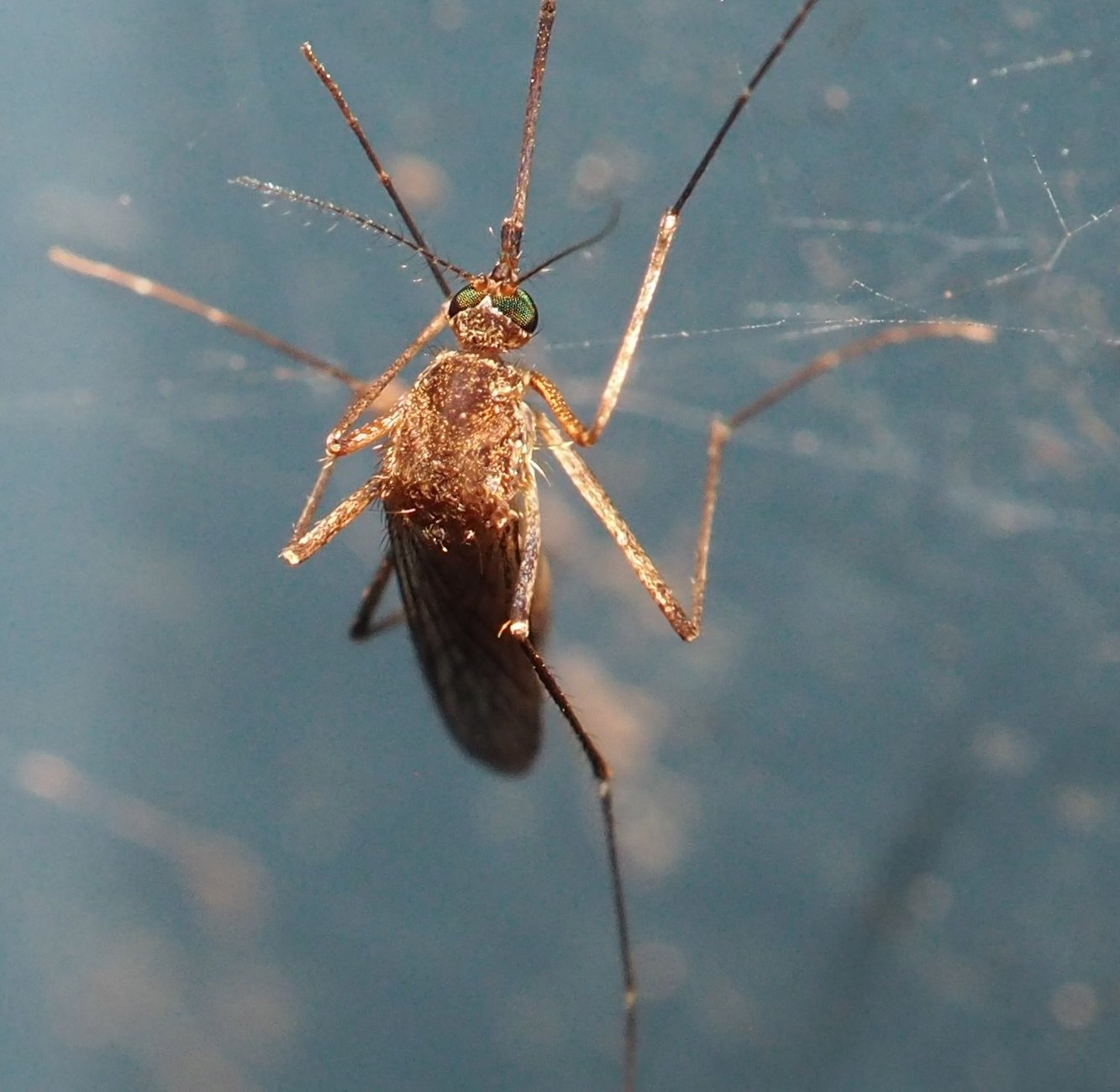
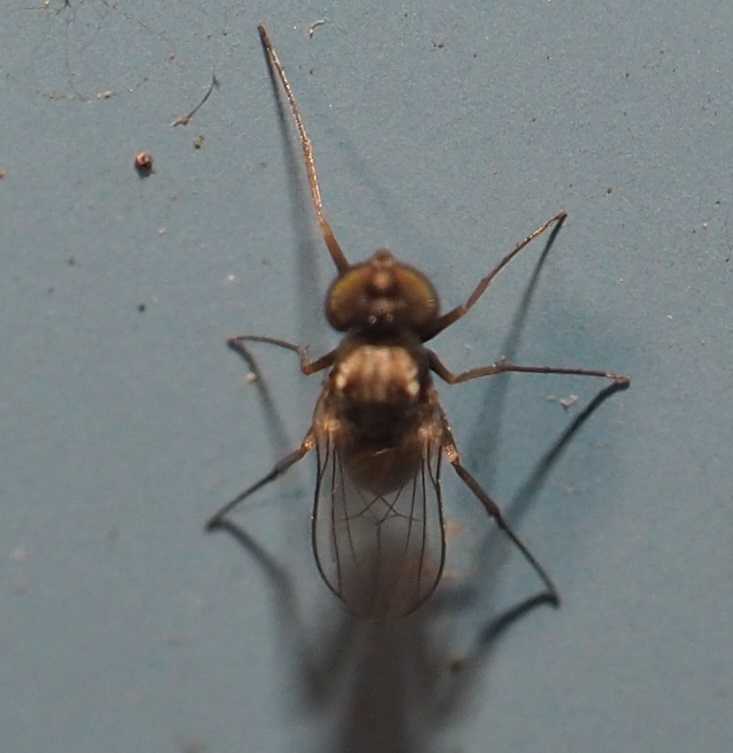

Here is ONE of our beloved orange flies. There are so many species! In Image 2, this tiny hairy fly is licking something off the leaf (maybe Oak). Third is another kind of tiny hairy fly.
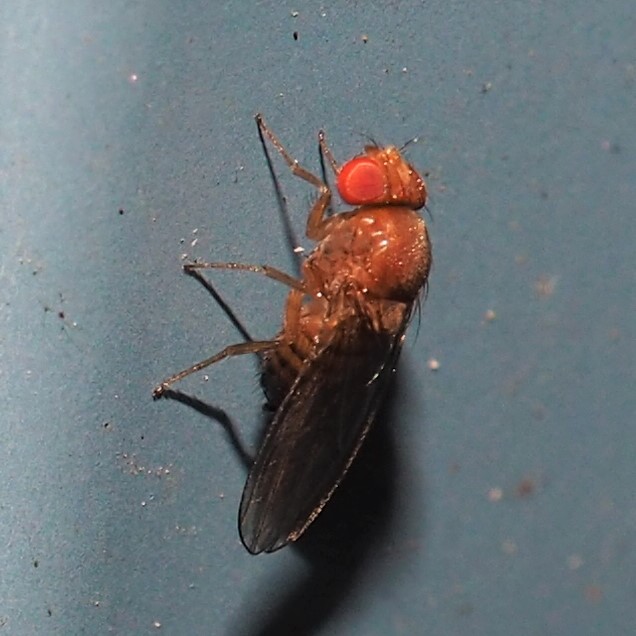
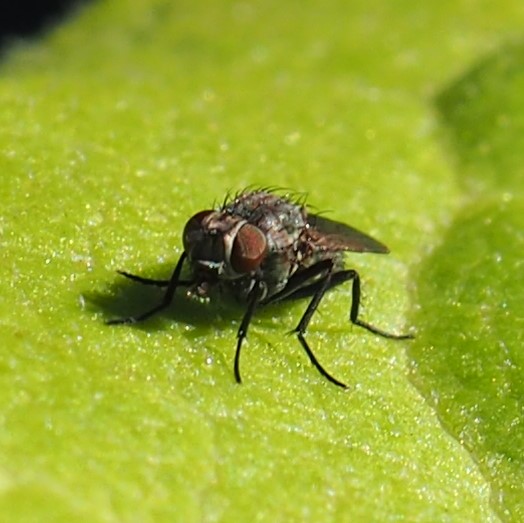

Here are some Crane Flies that have been visiting day and night. They (like #2) just look more amazing in the light beam at 9:38 pm. The third arrived at suppertime (5:10 pm) - My suppertime, that is.
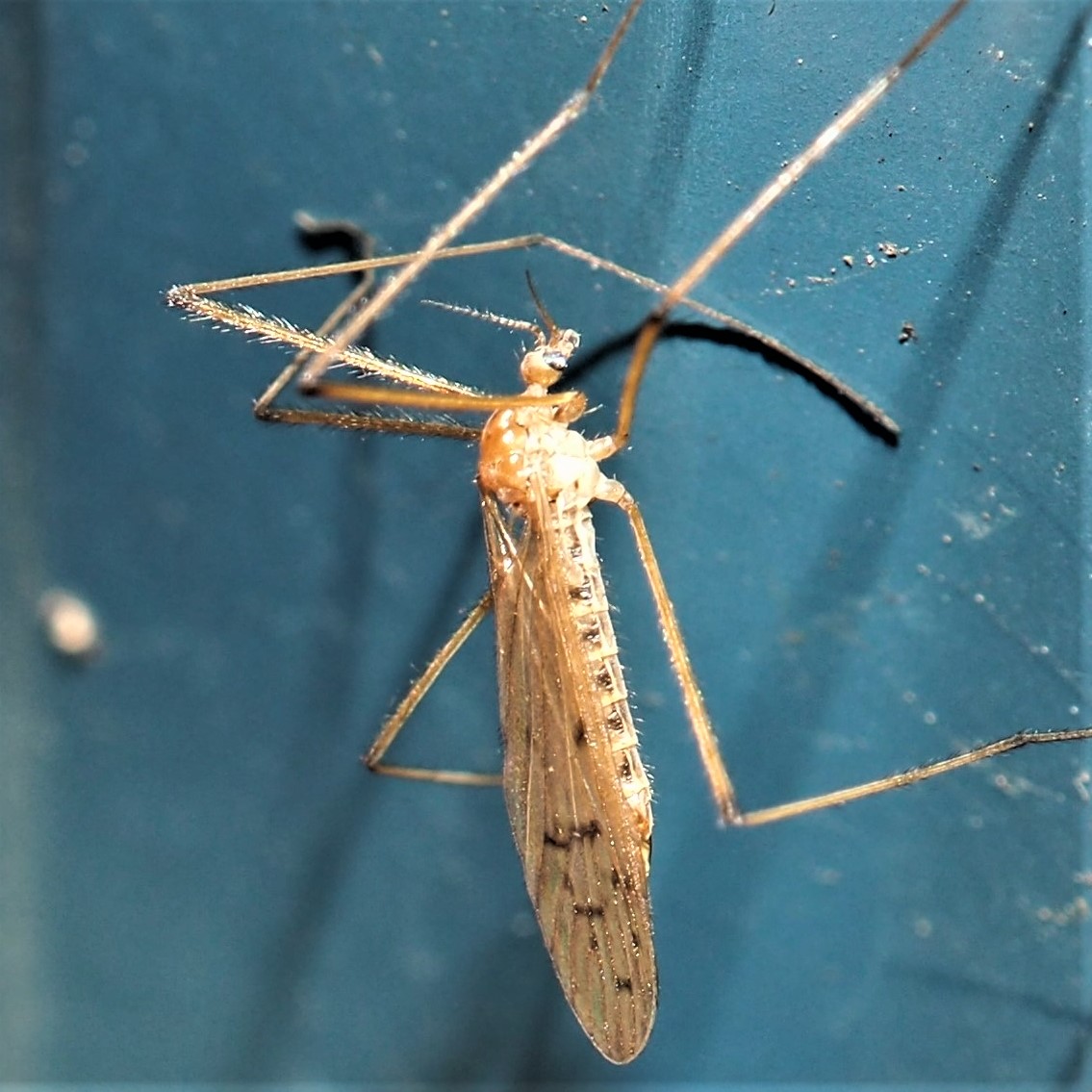
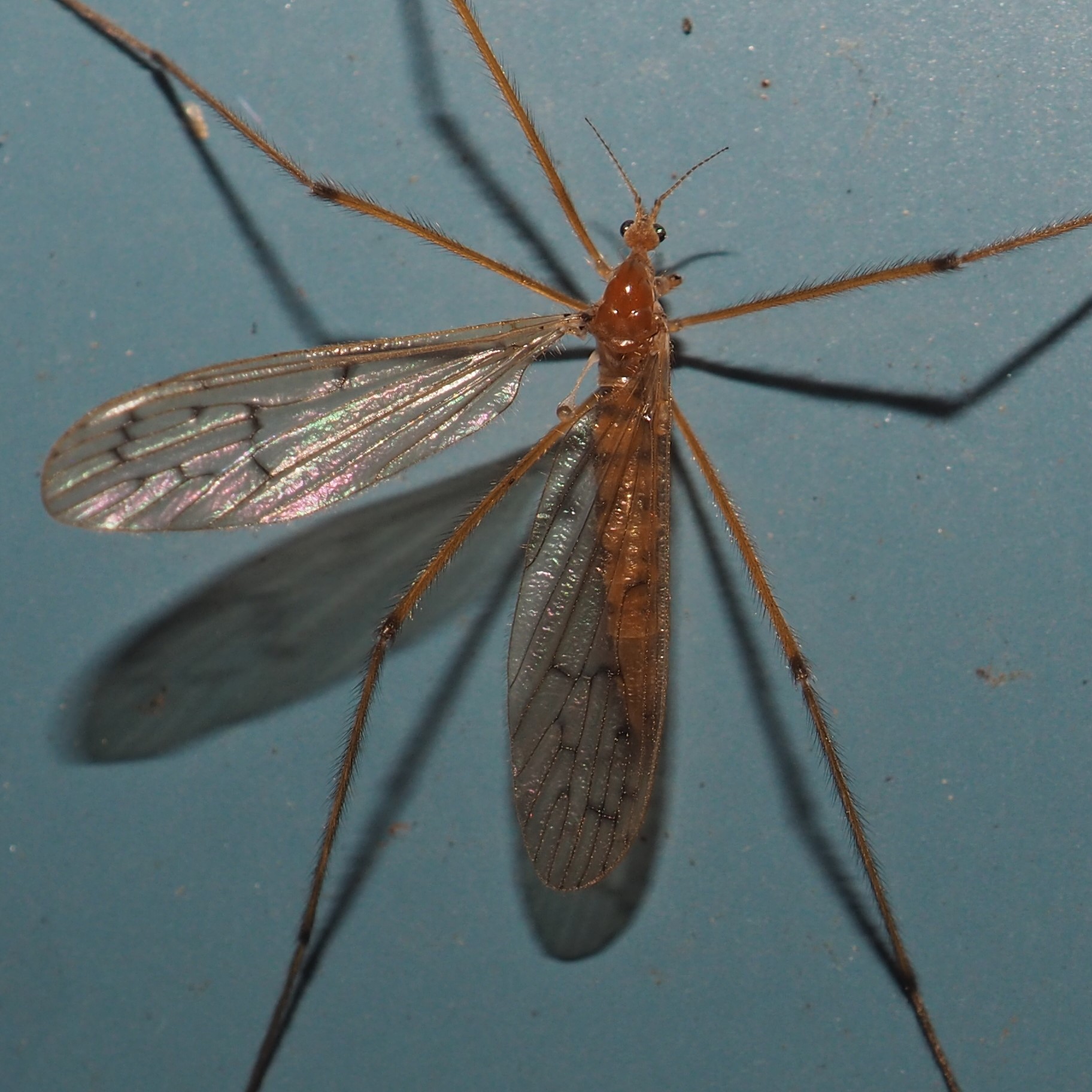
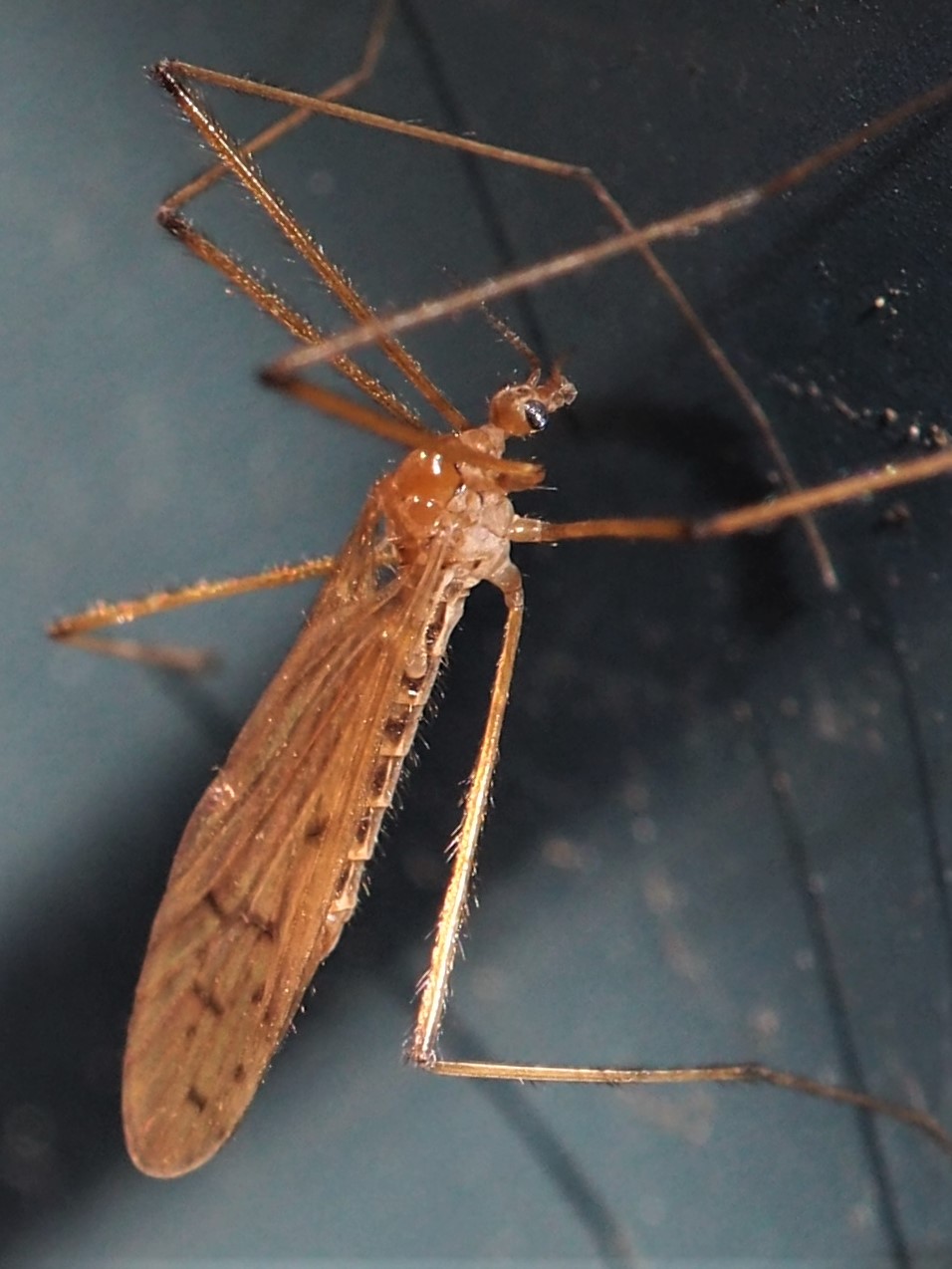
I was so excited when I thought this was a romance between 2 Gall Midges. But now that I look at #1, I think the big one (the female) is a Fungus Gnat. And that the little one is actually the Gall Midge. It has kind of that row-of-pearls antenna shape. Number two looks like a kind of Gnat, but not a Fungus Gnat, maybe rather a Wood Gnat.

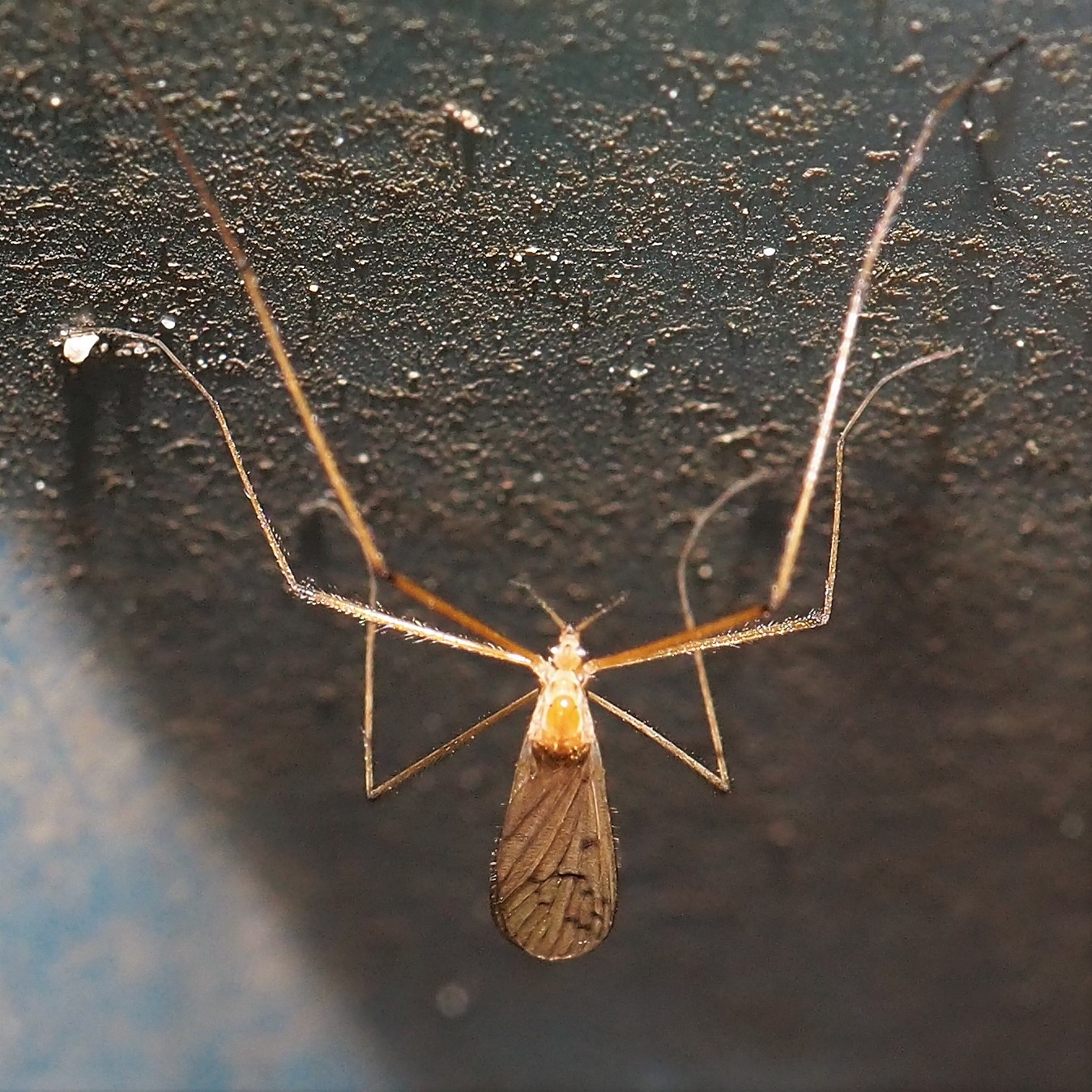
Flies hovering everywhere. Now that the poor asters have more or less dried up to nothing (except for seeds to come. If anyone wants seeds, come by - call first.) We still have had the tiny little American daisies to attract the Hover Flies. This first one is called an American Hover Fly. It surely does seem to be the most frequent species around here. Second is another in one of my tiny Zinnias from the rail planter. Third is finally another Helophilus fasciatus. I was going to pedantize and tell you it's a male. It seems to be very hard to tell unless the face is towards you. The eyes of a male Hover Fly and many other Flies are set touching while there is a sizeable gap between the eyes of a female! Number 4 is a female! At any rate, you can probably see the stripes on the thorax are vertical on both so you have a good chance of recognizing Helophilus Fasciatus.
.jpg)
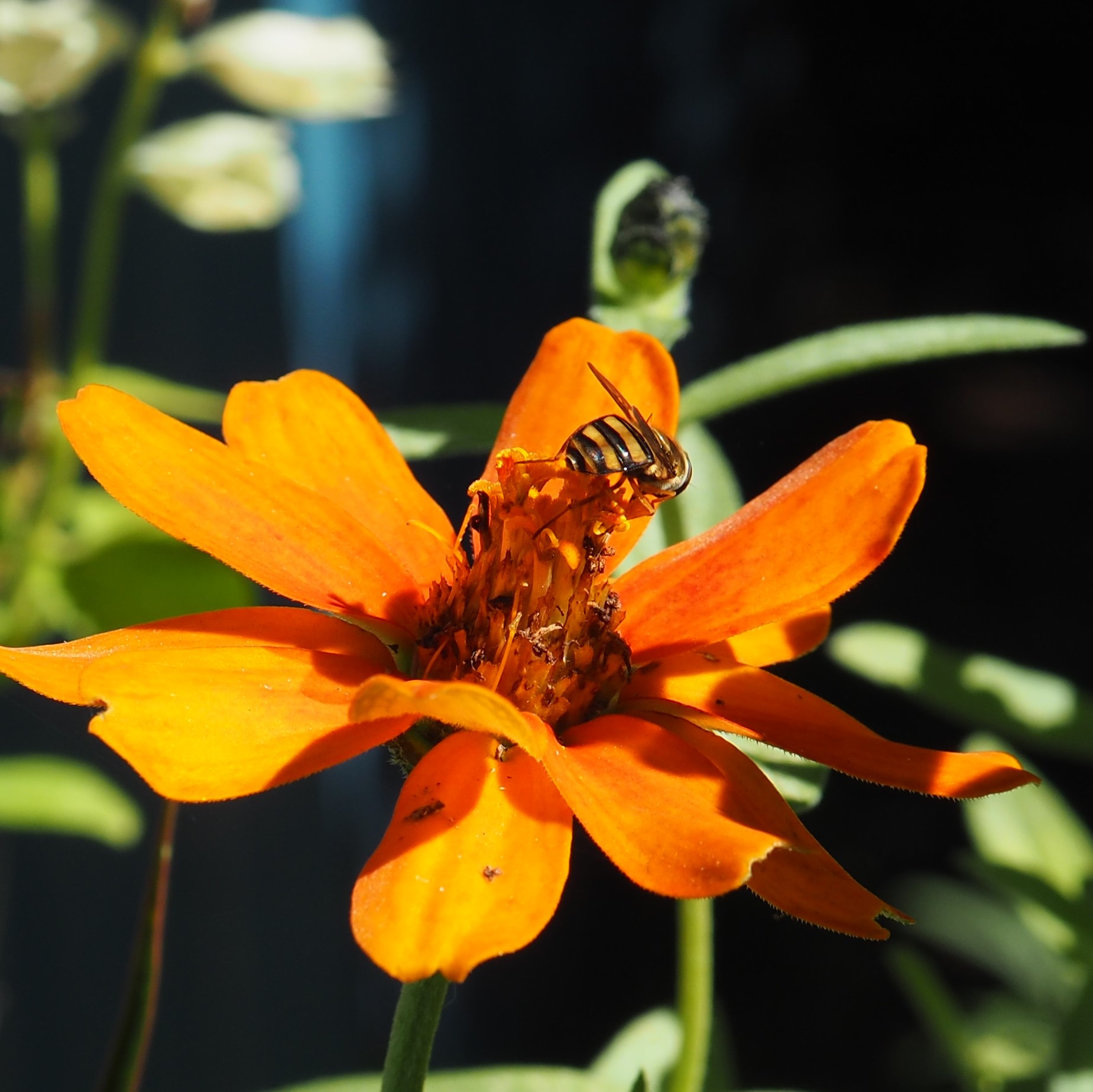
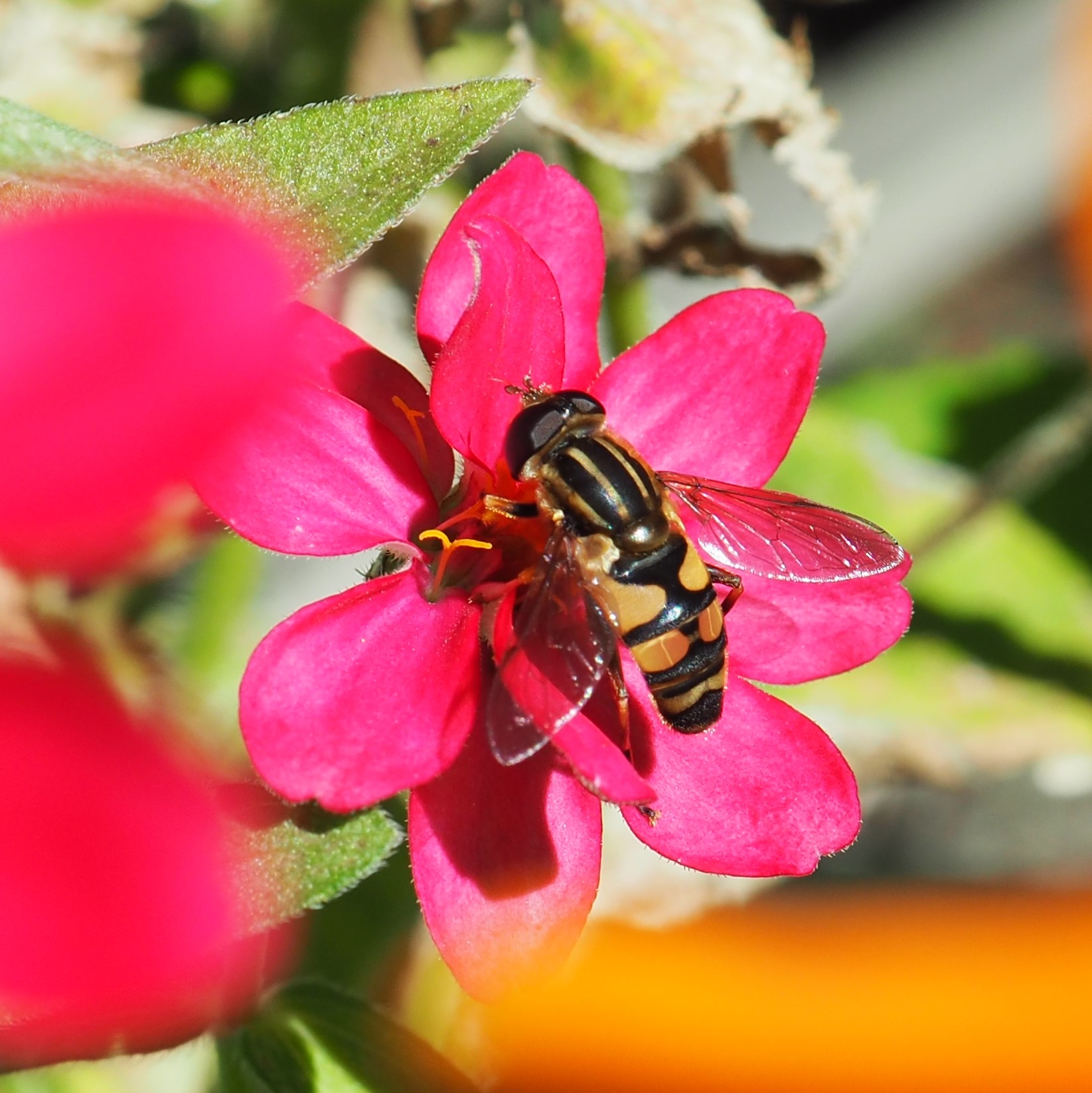
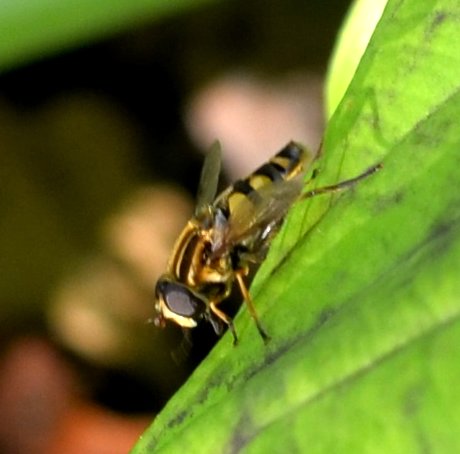
That wasn't too bad a selection of flies. I haven't seen a Robber Fly in a while, but okay, sigh.
Here is my week's collection of Harvestmen. The third was taken at 9:36 pm.
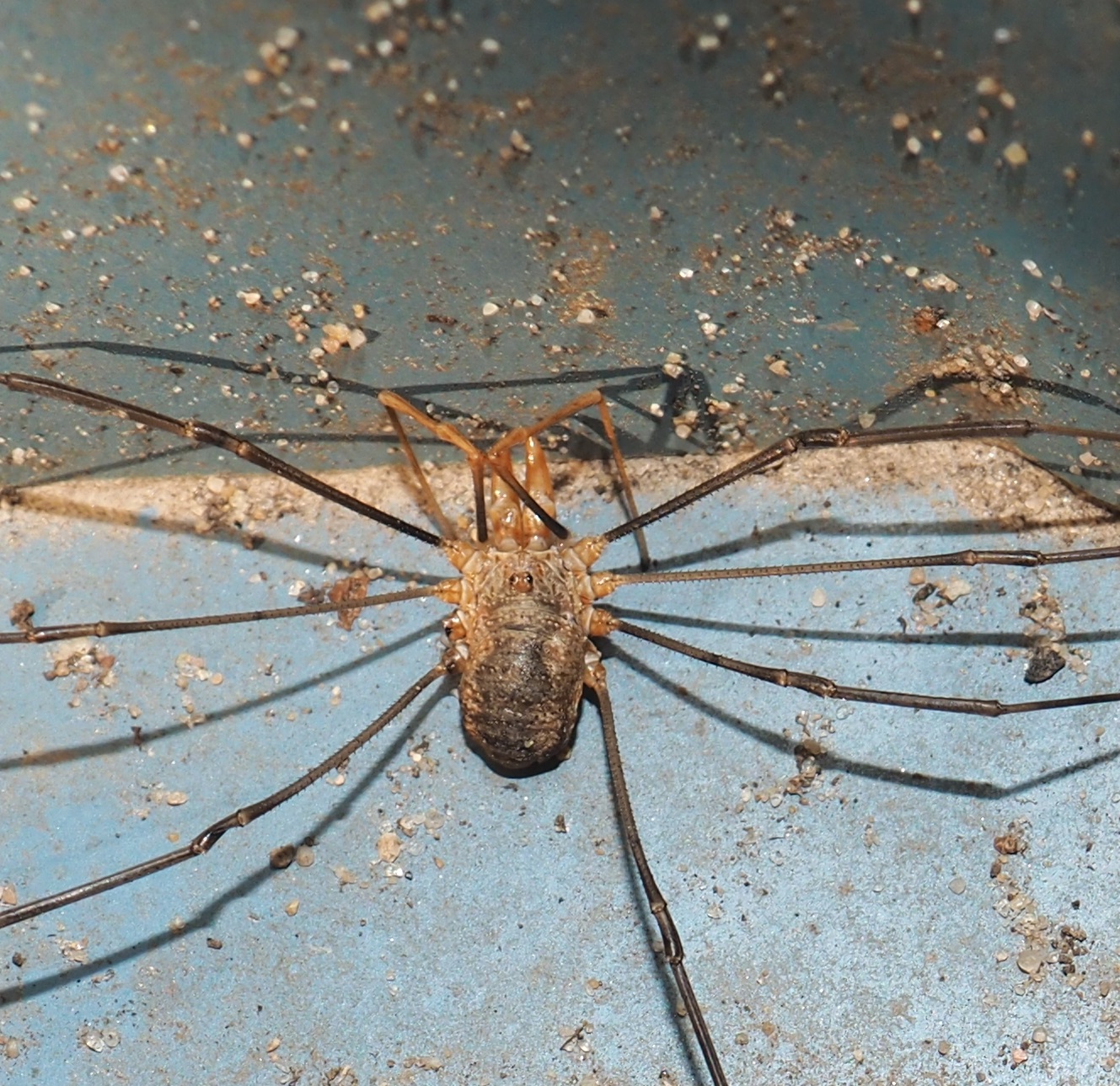
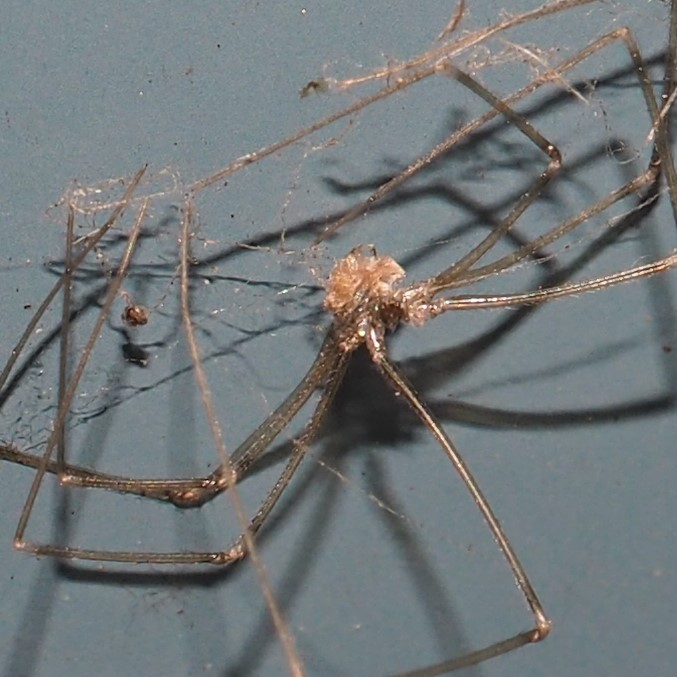
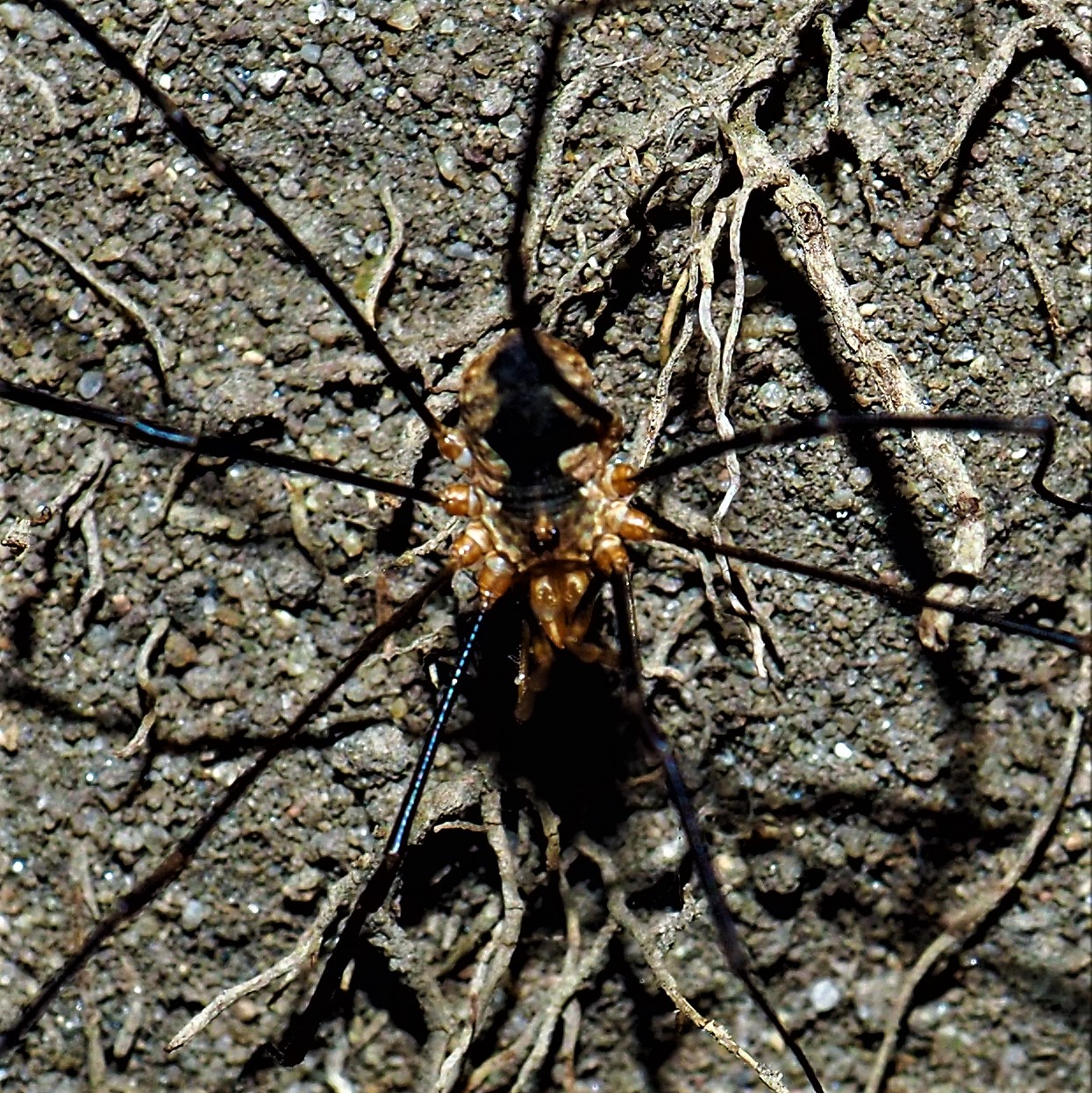
Here are some Brown Lacewings. I don't know the species very well at all. I still haven't heard back about Number 4 as to whether it is a Lacewing at all.
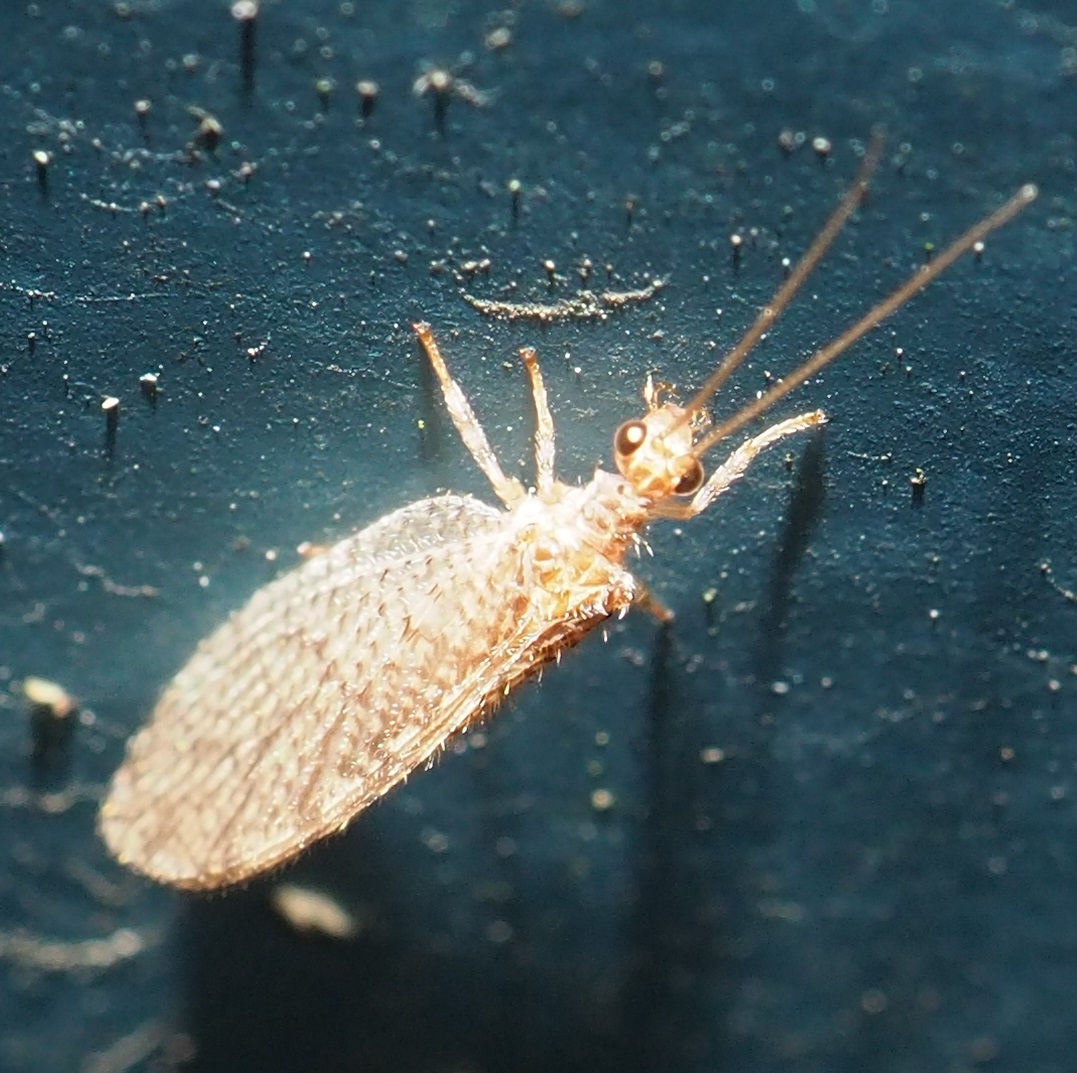
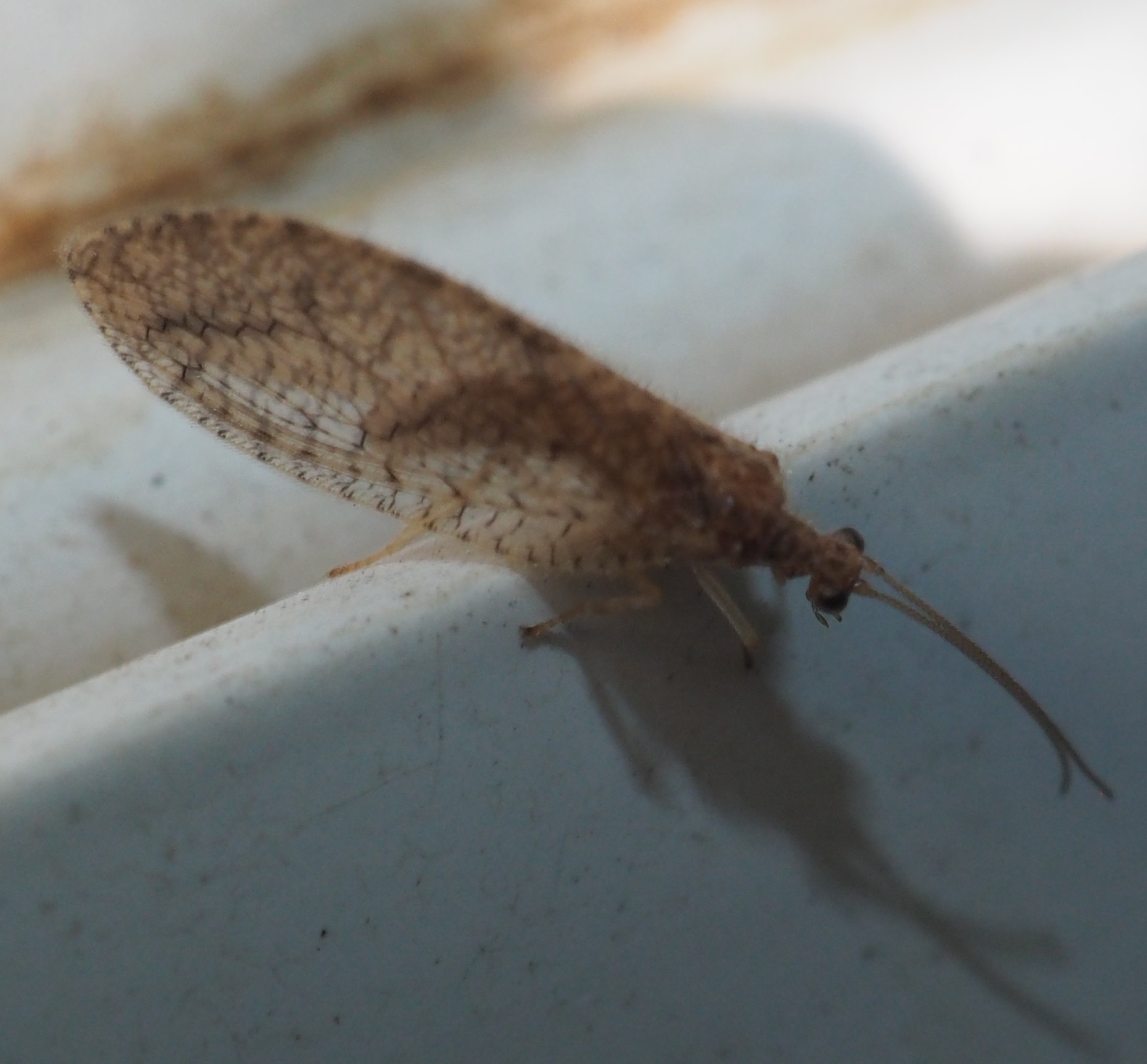
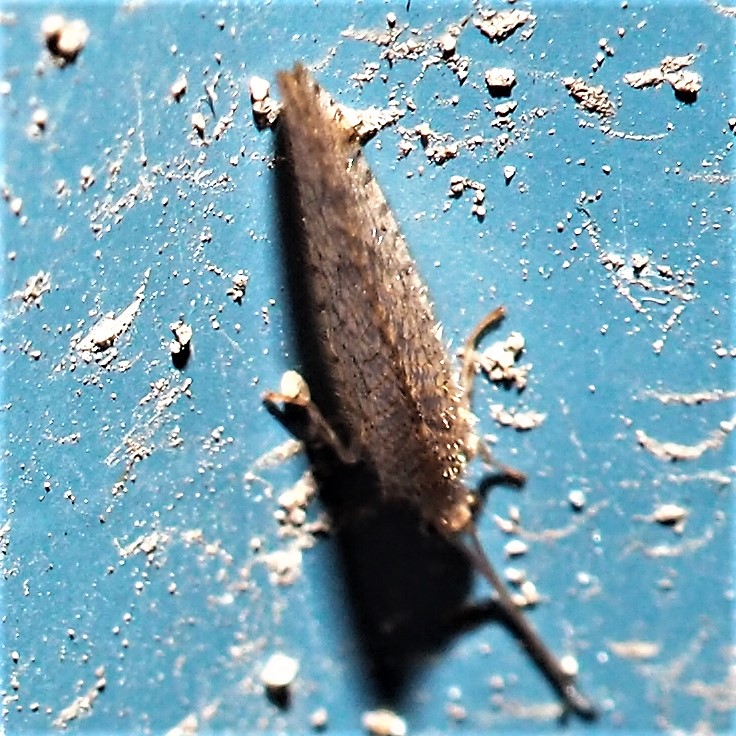
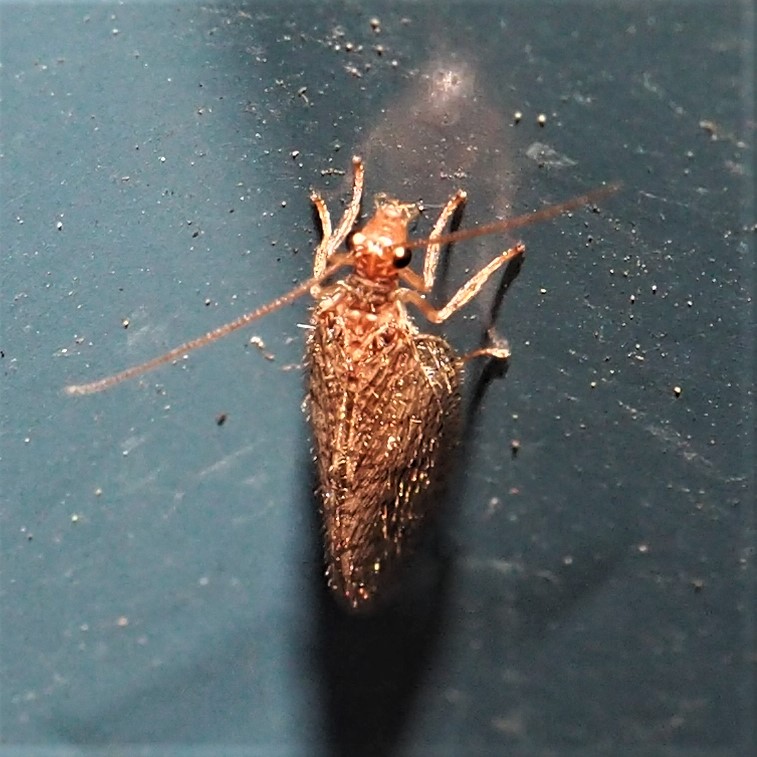
A mystery moth. A real mystery. Another mystery. The fourth one was a real mystery until my friend @tigerbb explained it to me. What I saw: a minuscule minus 1 doc moving slowly across the bathroom floor. I wet the corner of a paper towel and lifted it up and took a few pictures. To my surprise, the tiny thing that had looked like a transistorized spider turned out to be TWO creatures doing what I could only think was mating. The REAL story a la @tigerbb is: It really is a single spider. What I had thought were two heads at the left hand end were in fact the greatly enlarged pedipalps. Supposedly as the spider grows, these palps shrink appropriately. It seems to me a lot like the phenomenon which happens sometimes when a baby boy is born with the same symptom. You who were ever boys could tell me this analogy is a load of hooey, but then...
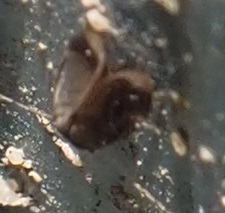
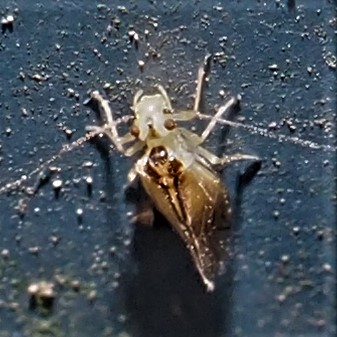
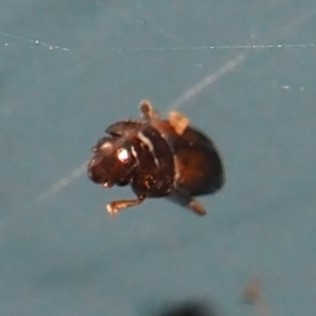
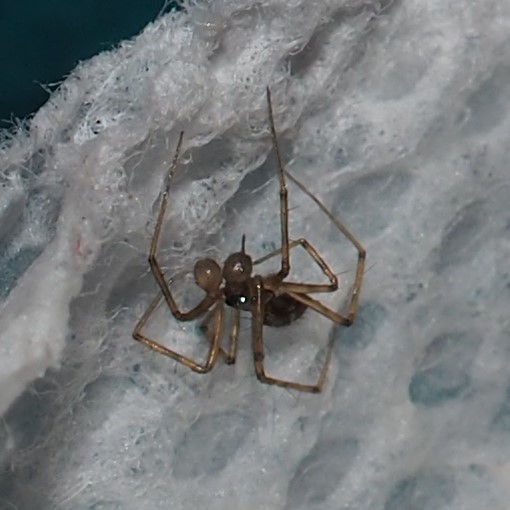
First is a lovely pillbug at about 9:30 at night. A Ghost Spider at 9:32 p.m. This last picture is probably another kind of Ghost Spider, and appropriately out at 9:32. Aha, at last one I recognize. It is the Nursery Web Spider, which comes out at night and sits a few inches above the line where the shop joins a break in the ground. Always (in the past 4 years at least) about now. Always in the same spot. It looks a tiny bit like one of the Ghosts, but is longer and holds its lower pair of legs (here the ones closer to the head) together.


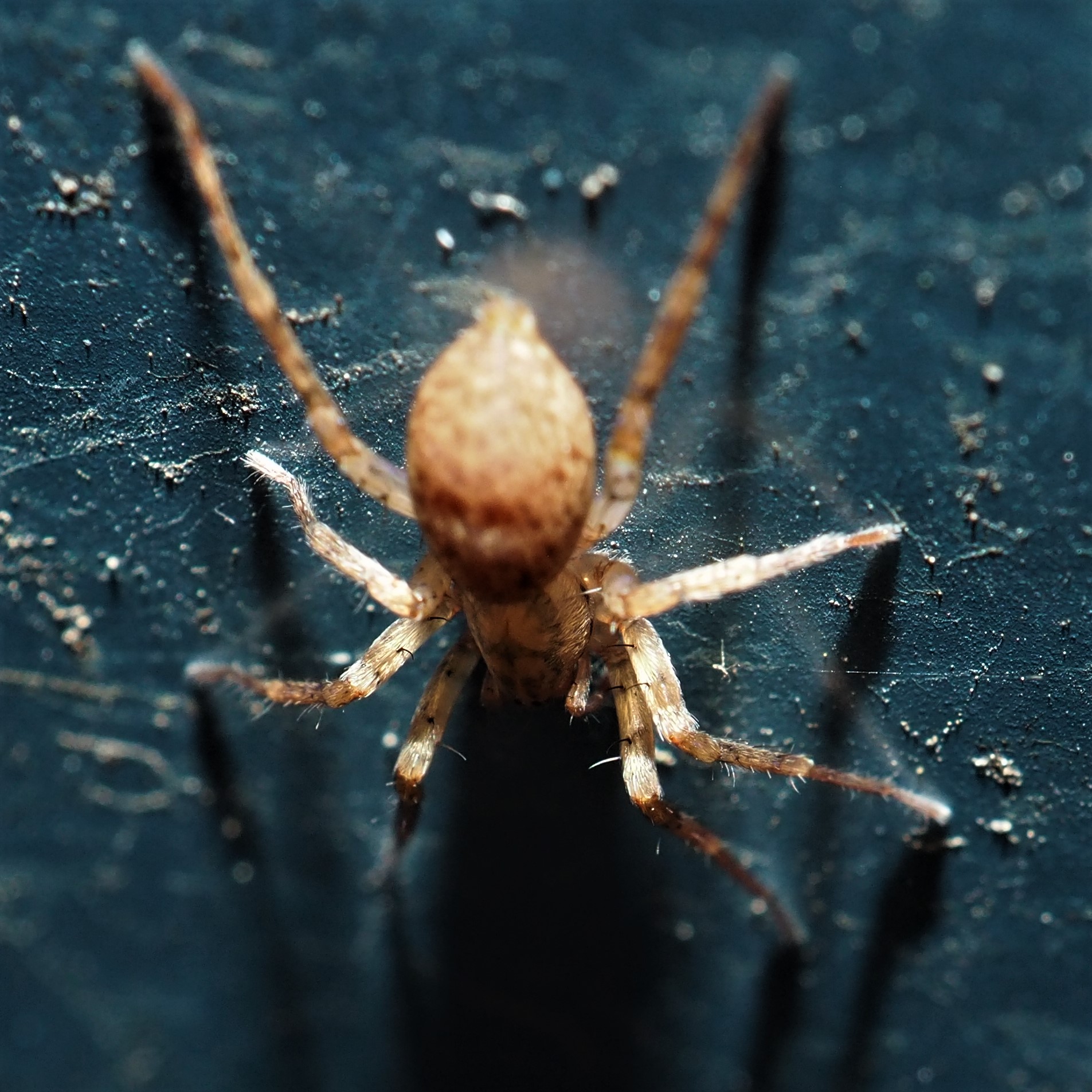

We have a couple of little spiders that are going to be easy to confuse. They are all males because some of the clues are polka-dots on their pedipalps. The first two are of the same little guy. They have a round bum and their pedipalps are black with white polka-dots. The suggestion tool in iNaturalist keeps telling me the ones that look like this are related to the Widow spiders. brrr. I don't think we have any REAL Widows here, but a lot of False Widows, which sounds like a value judgement. Same for the third age. The third one is another mystery. It has a polka-dotted longish abdomen and also white polka-dots on its red palps. Relax, the fourth one is a female - see her skinny palps? And I think she's from another species.
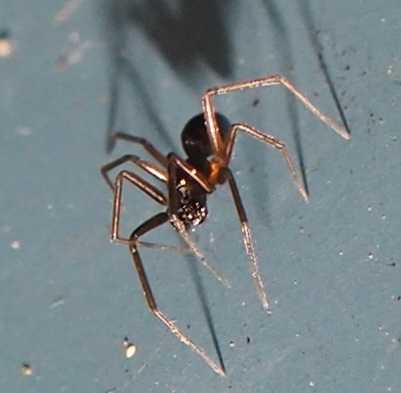
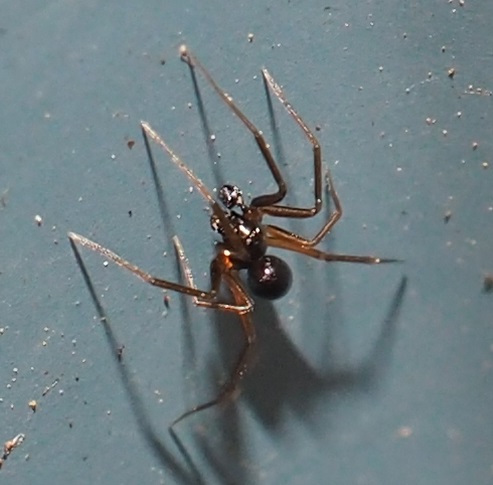

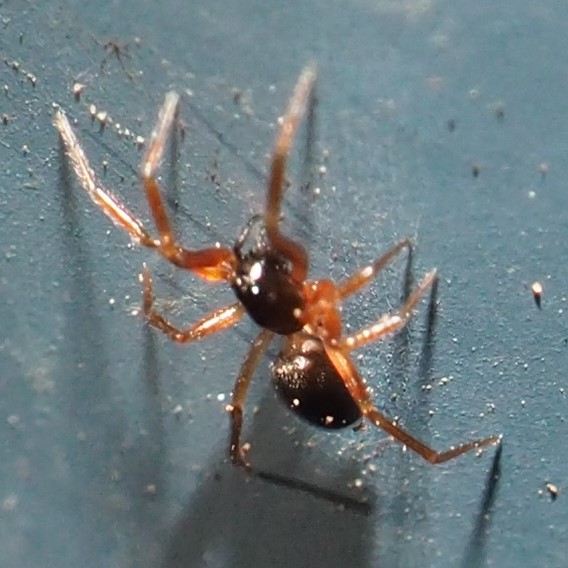
That big old Spotted Orbweaver was still out there for a couple of days. It has disappeared in the last couple of days. Second is a spider with a big smiley fake face. You have got to understand that most of my pictures are of Common House Spiders - I find them very attractive. So here is one holding up her egg case. Last is one that I am not too sure of being able to ID, but if you look at it, doesn't it look like the school bully (back when there were school bullies, hopefully less and less) running to the left, crying (zoom in) as he retreats from bullying the wrong kid.
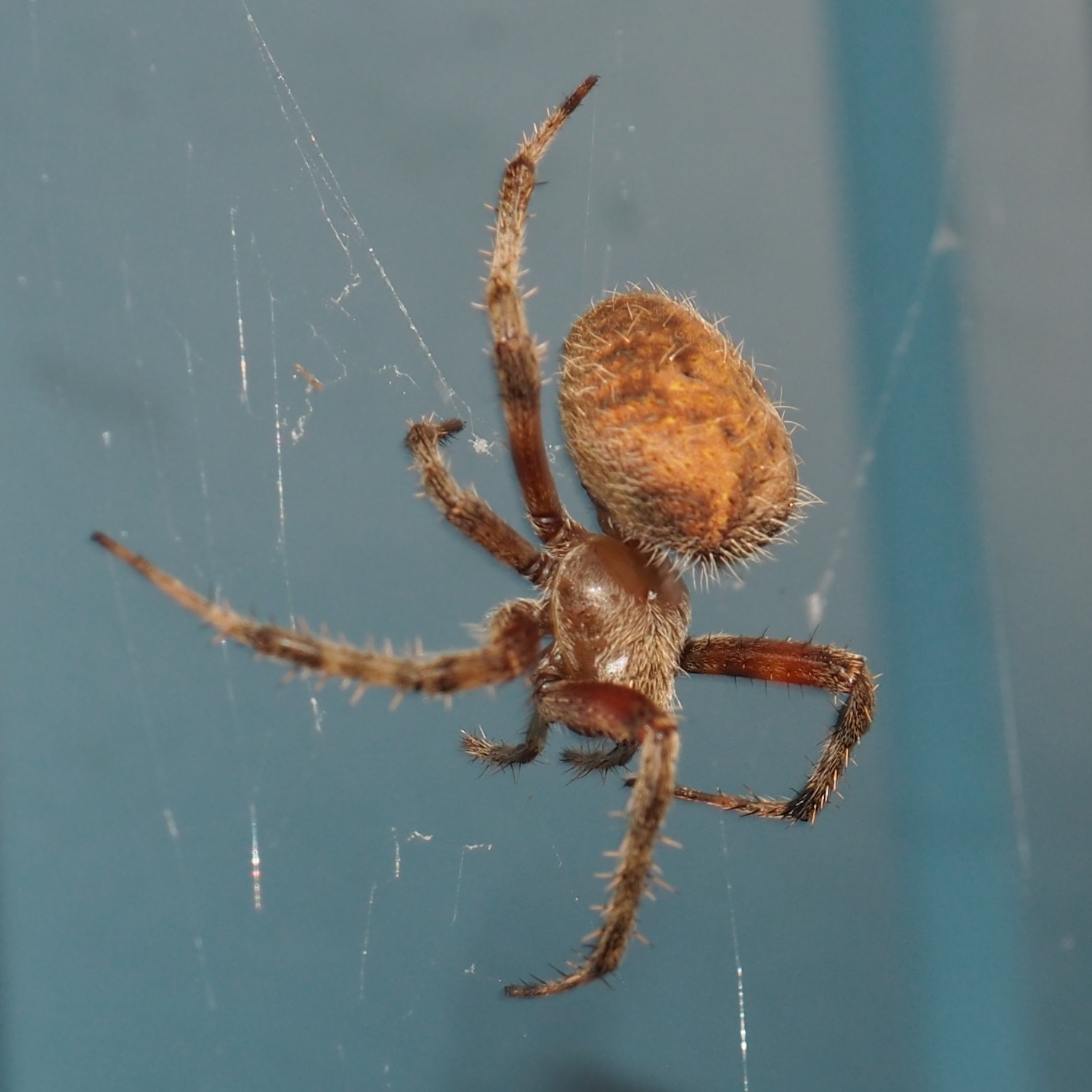
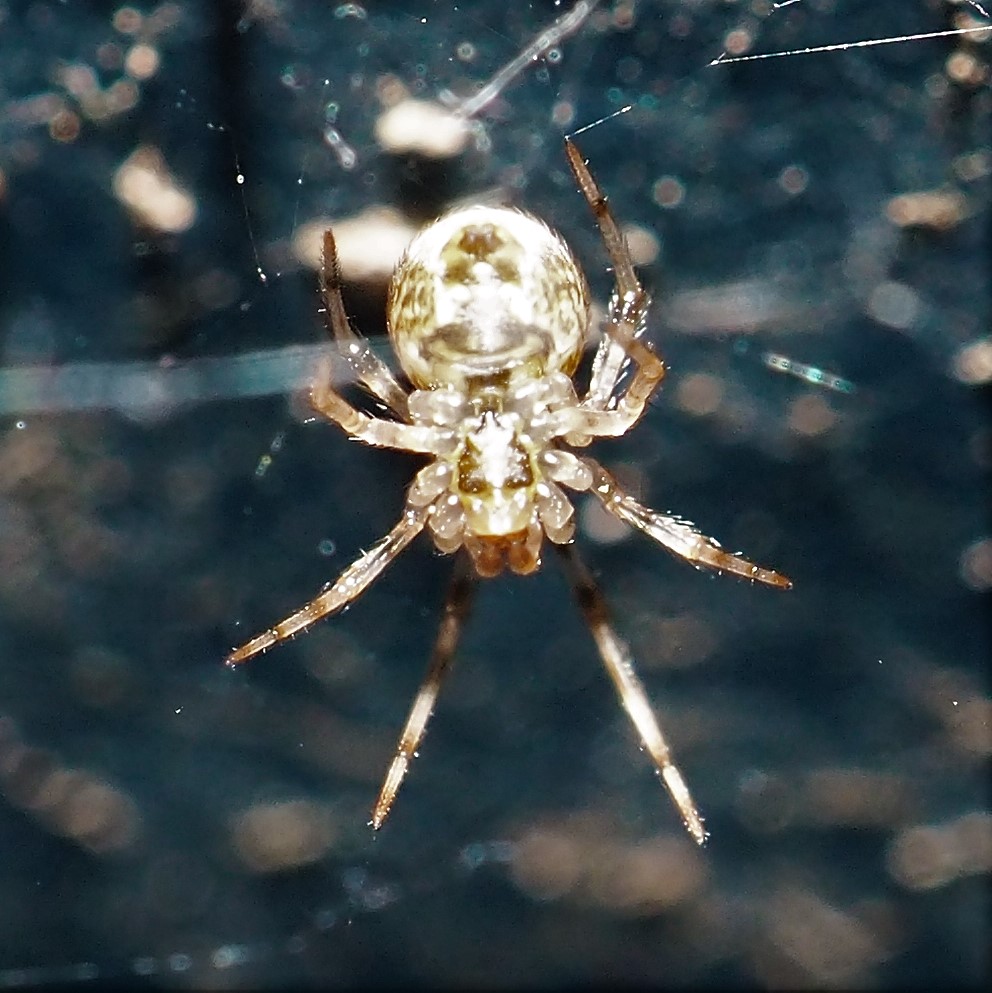

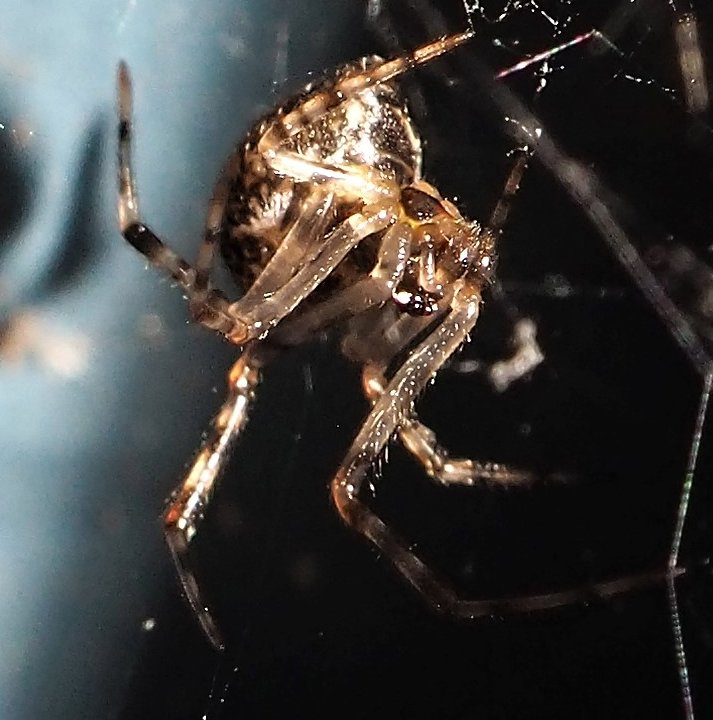
We are just about to finish off with a couple of wasps. I think thw first two are of a spider wasp. The light sure was green there. The third one is one of the Yellowjackets, probably an Eastern or a Germanic.
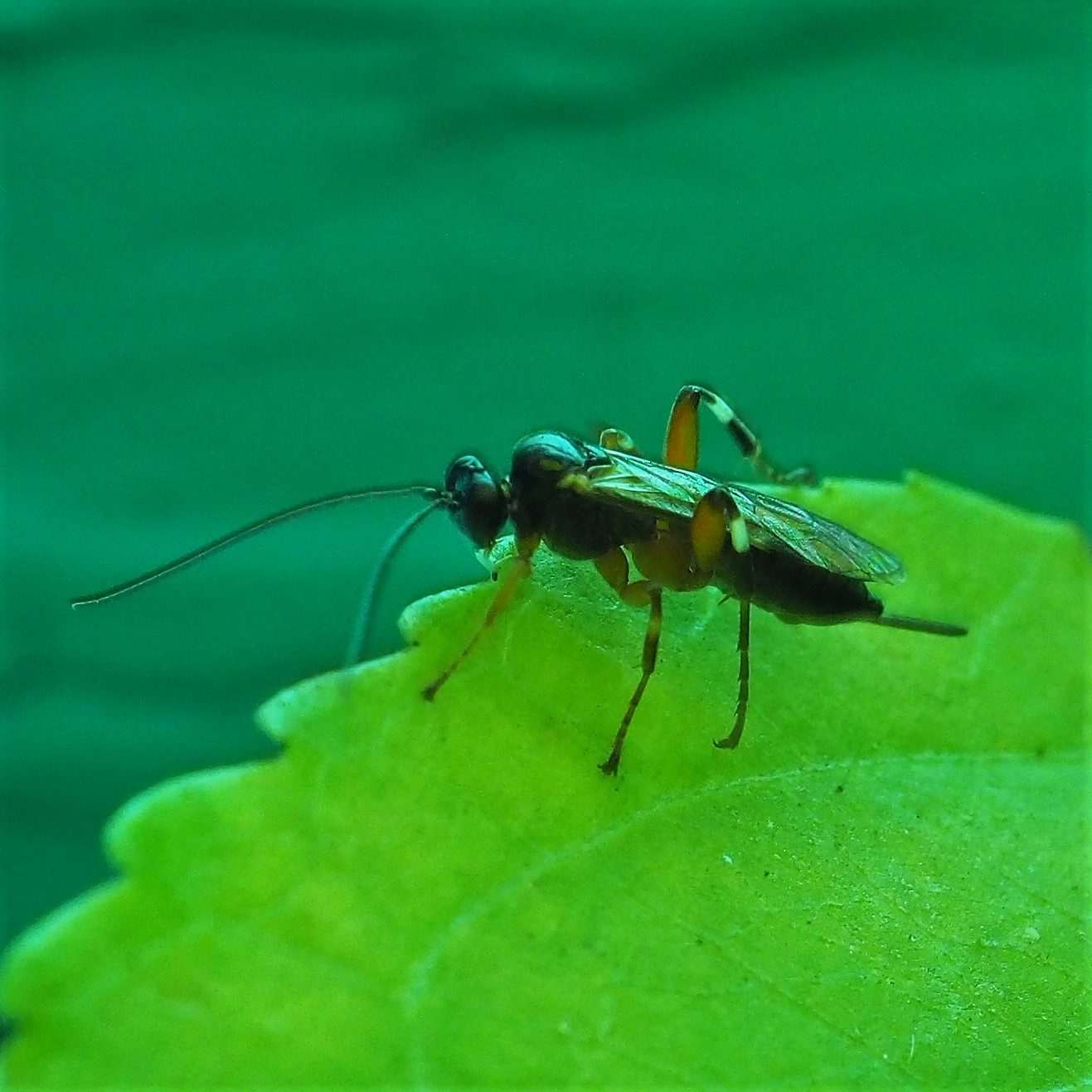
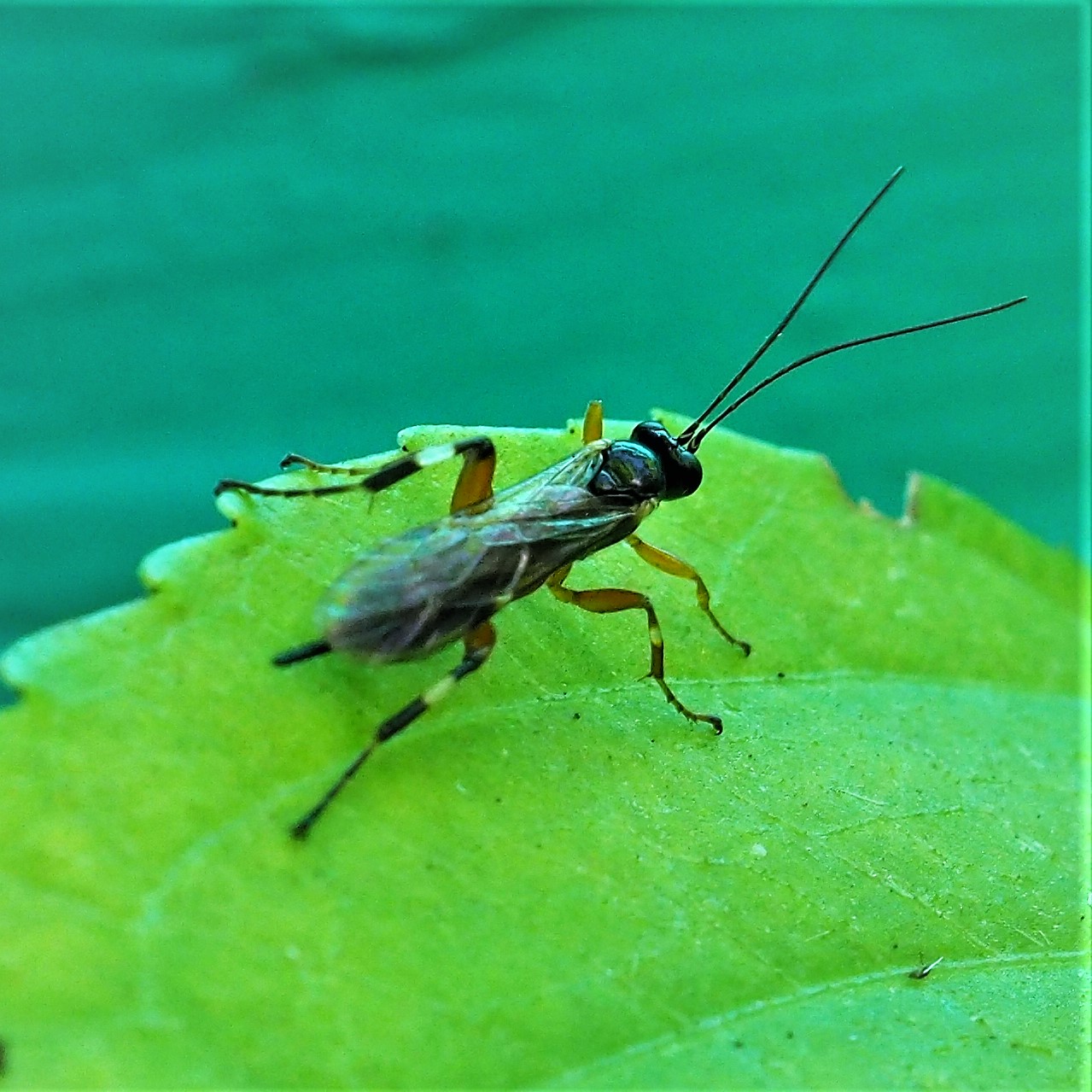
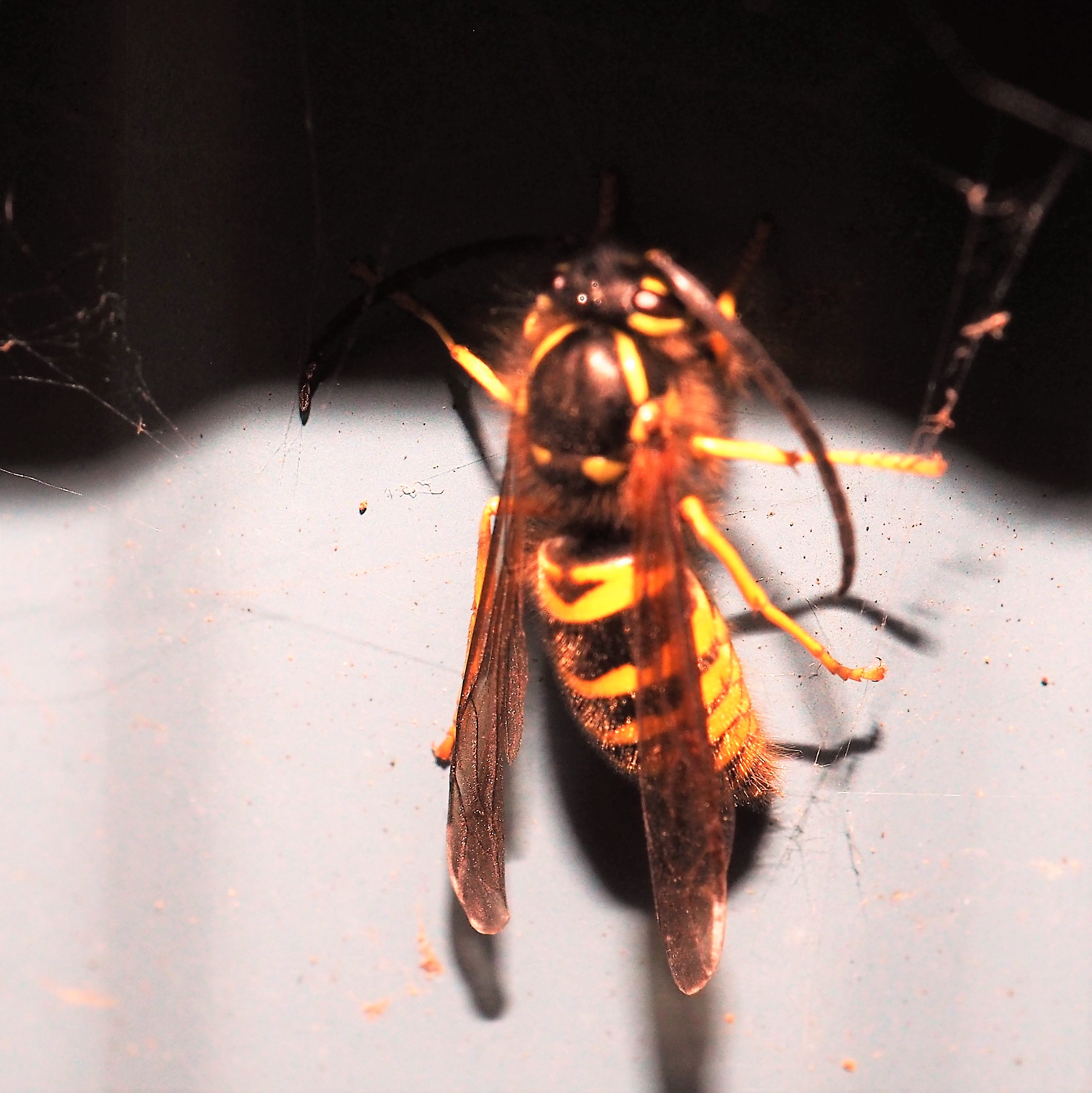
We have just a few shots with pretty flowers. Since taking the pictures of the little annuals and an aster or two, they have all turned their feet into the air. The last little baby maple seeded itself in the bottom of a can of potting soil.
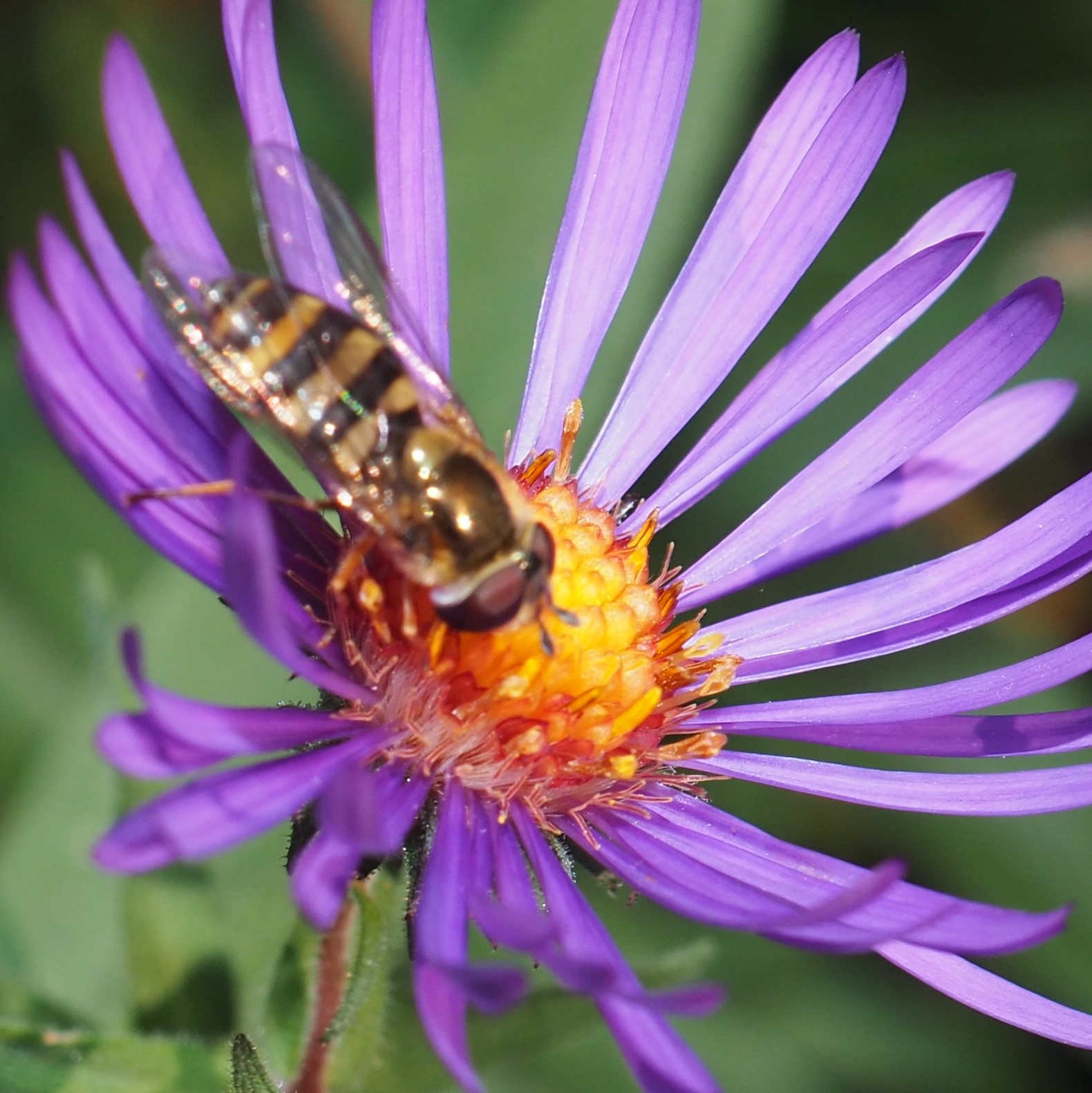
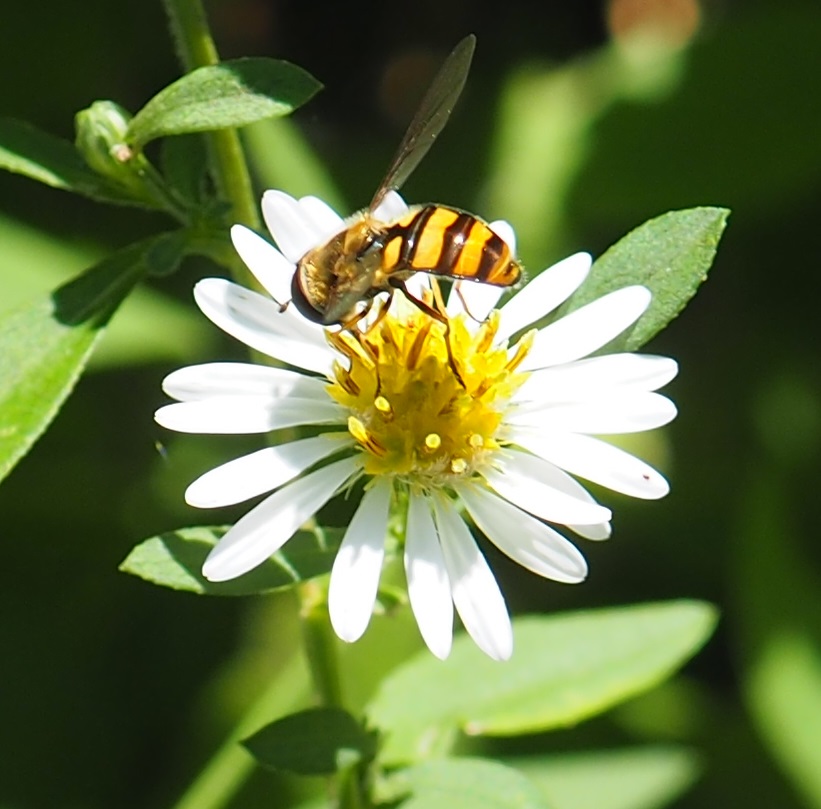
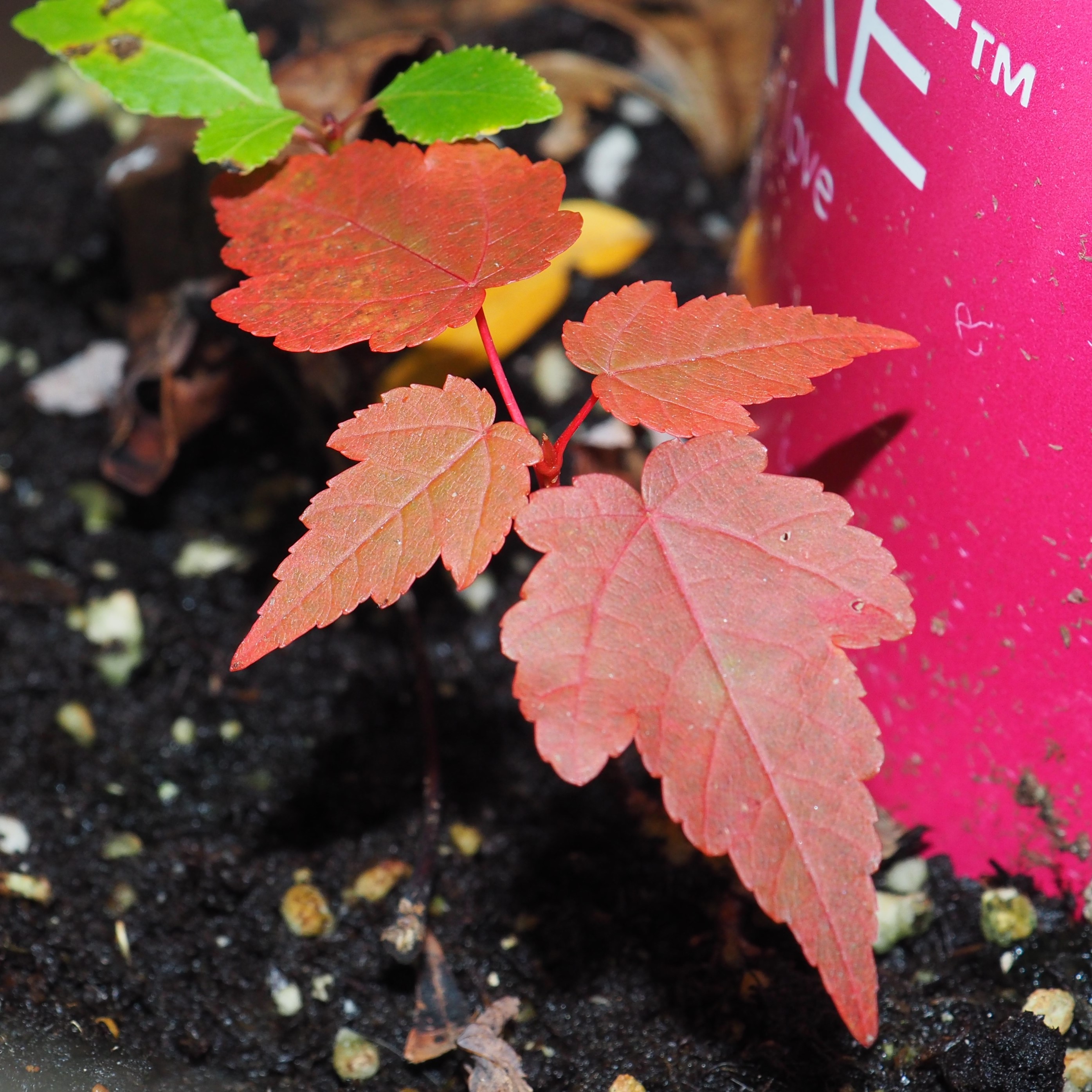
So we had better take a break now - enjoy the animals and the flowers in here - I hope one day I can show you some of the real things! Take care, there will be another spring and certainly there will be some surprises between now and then.
Love, Martha
Back to October 14, 2018
Forward to October 28, 2018
Back to main menu
copyright Martha O'Kennon 2018


















































.jpg)































